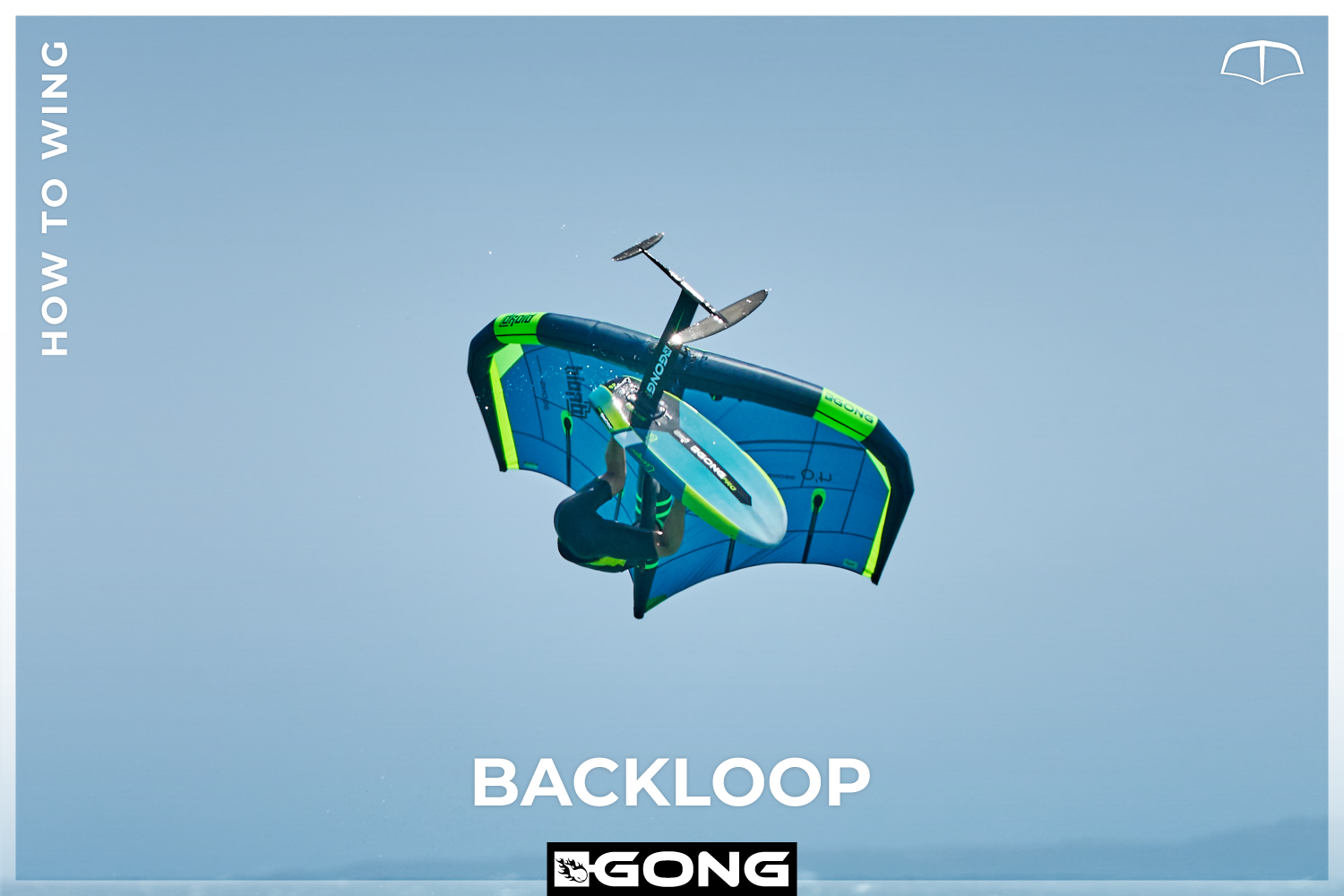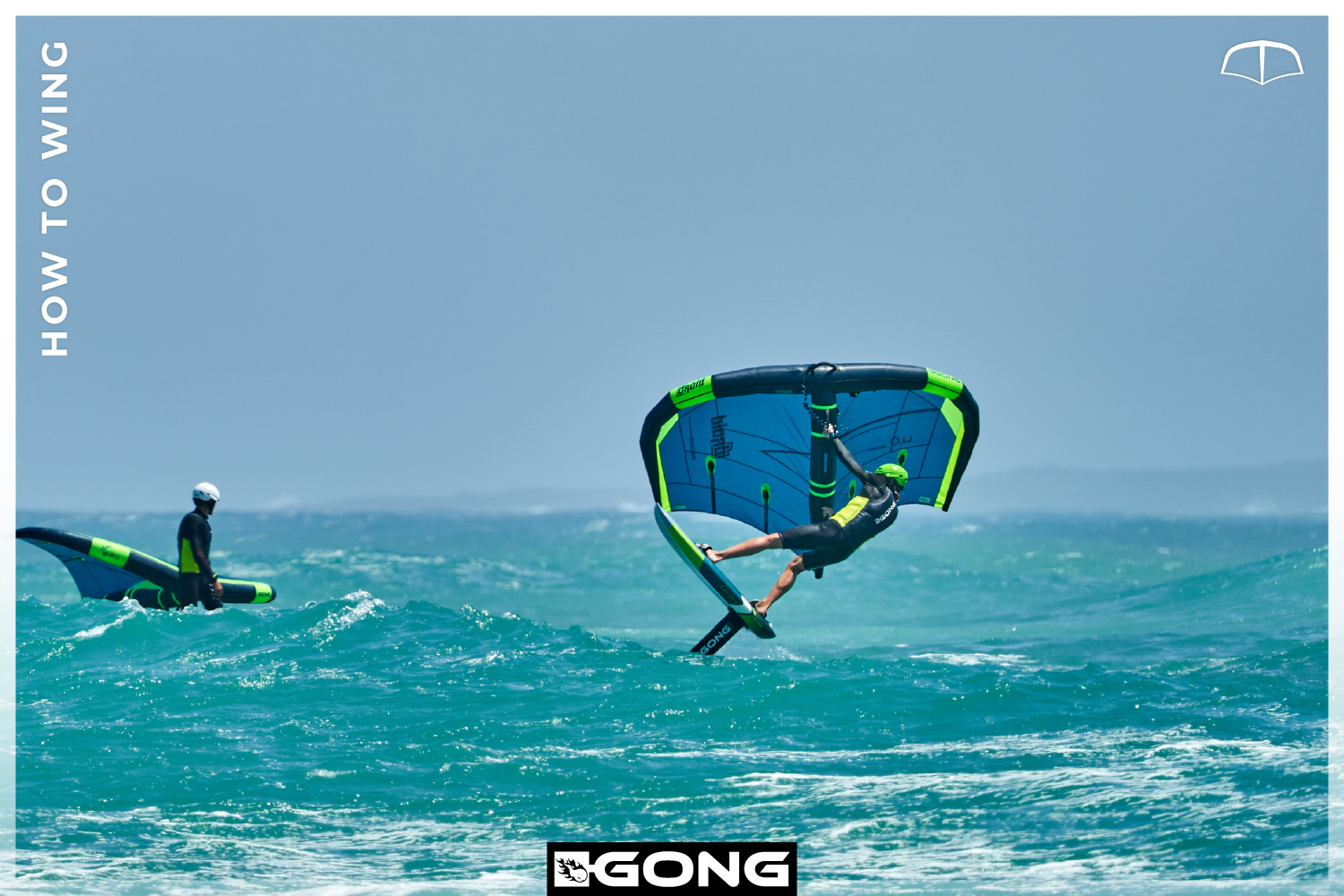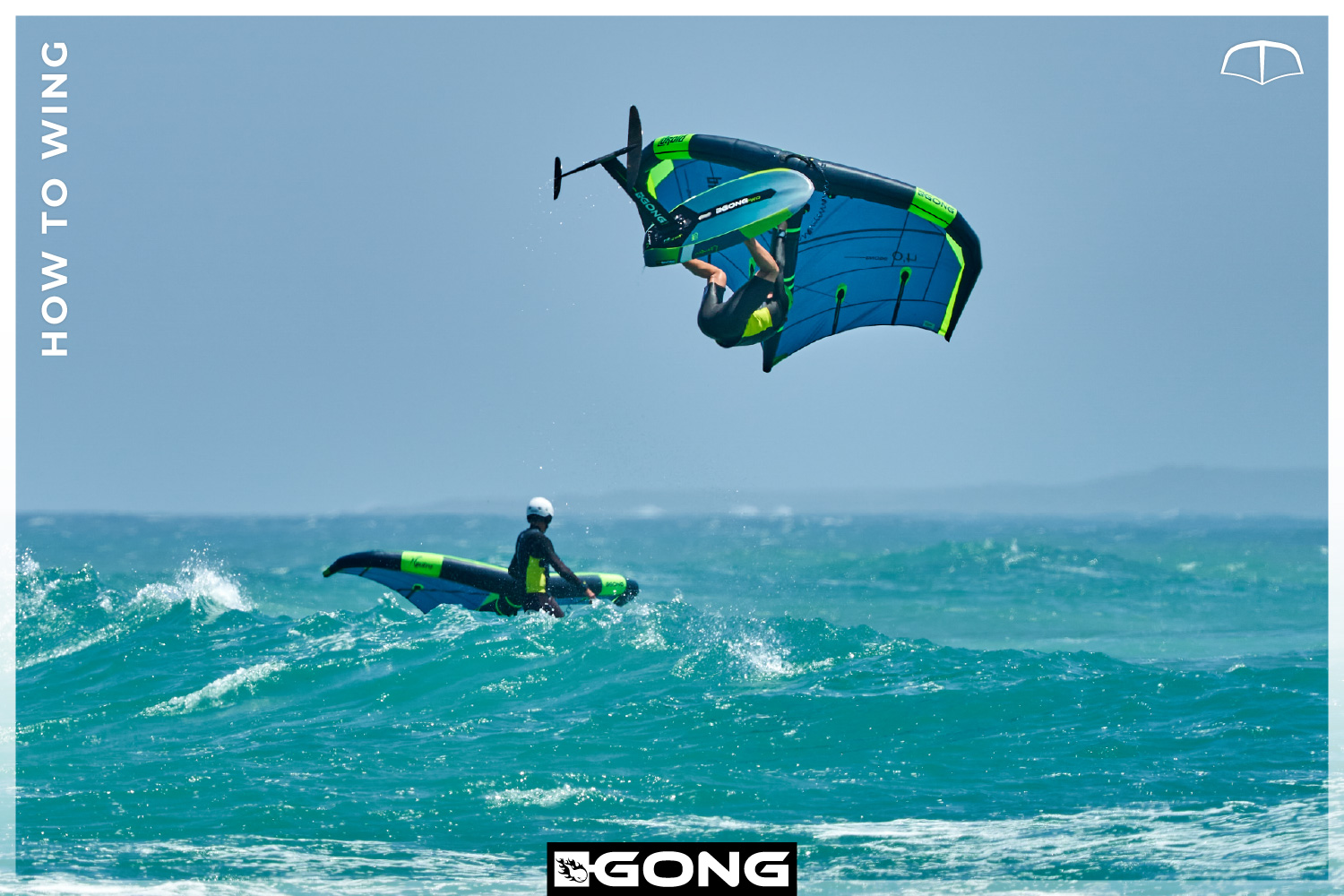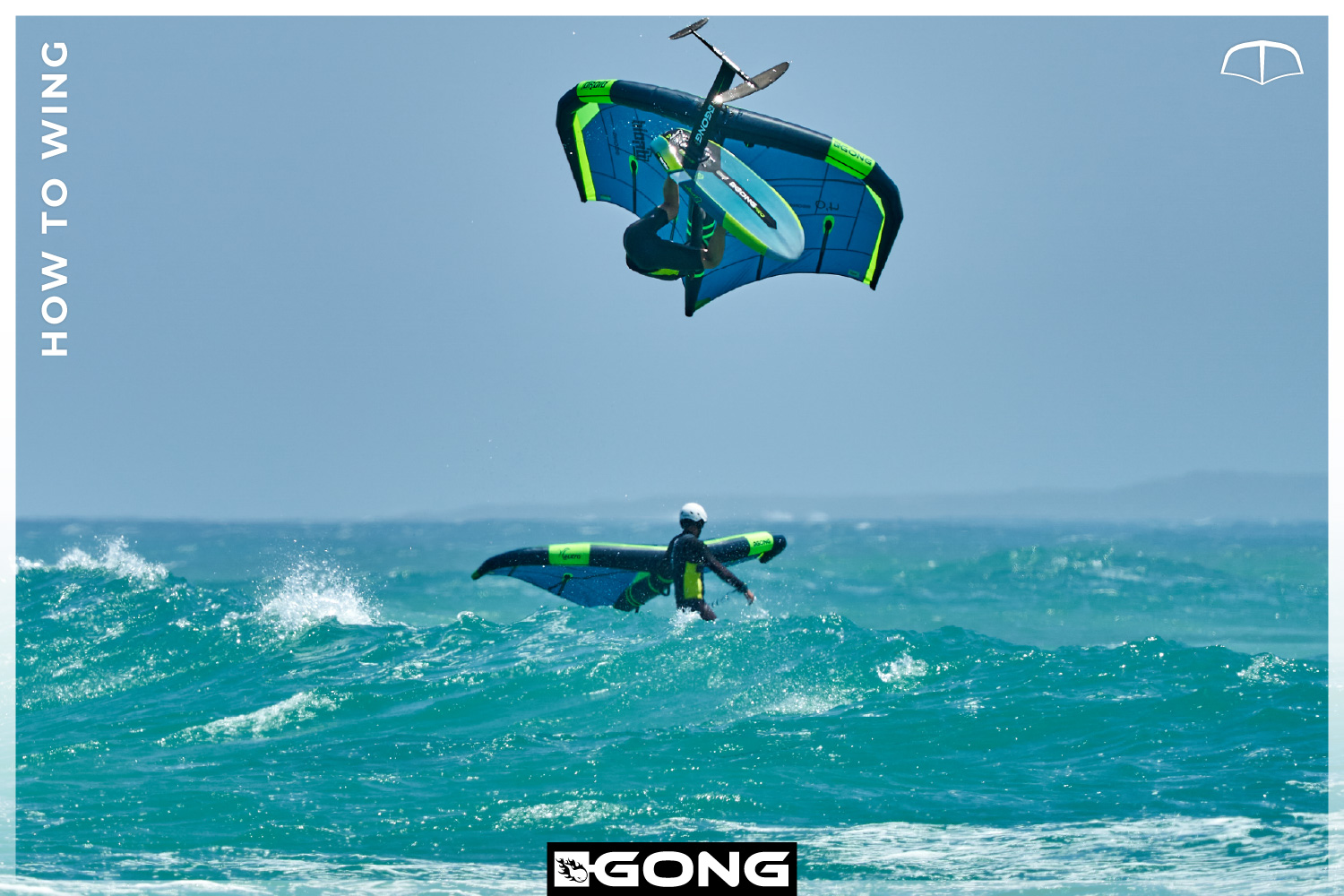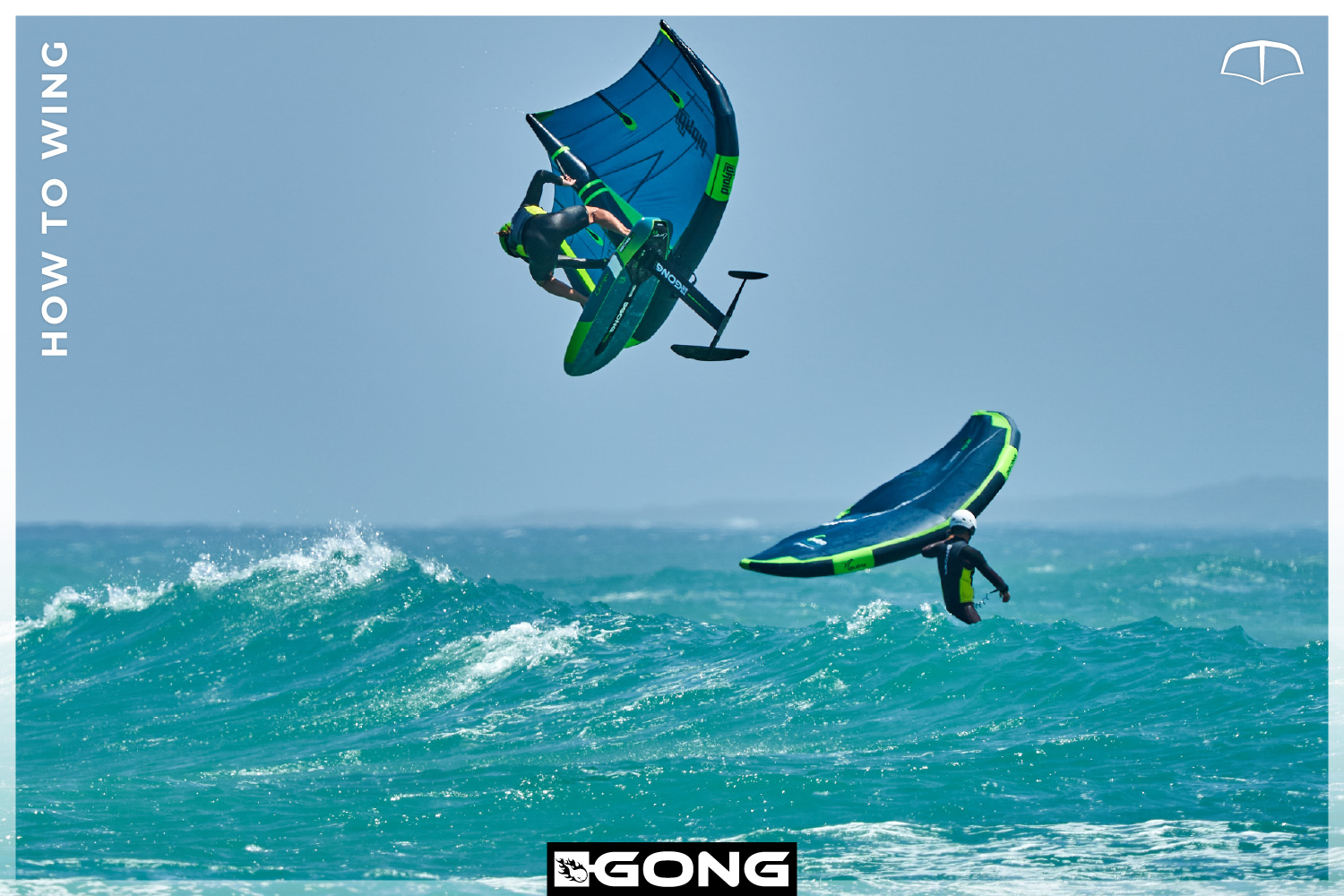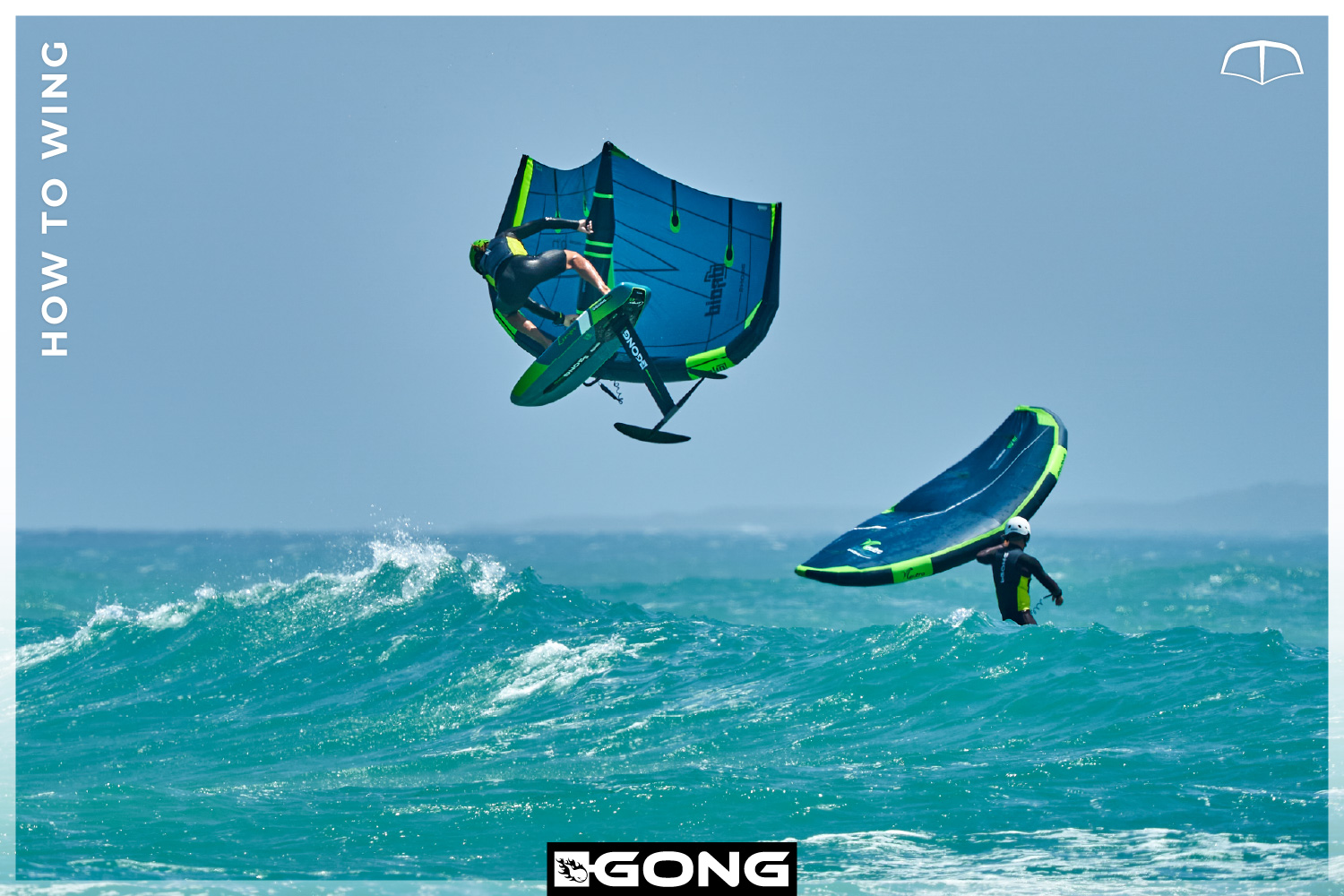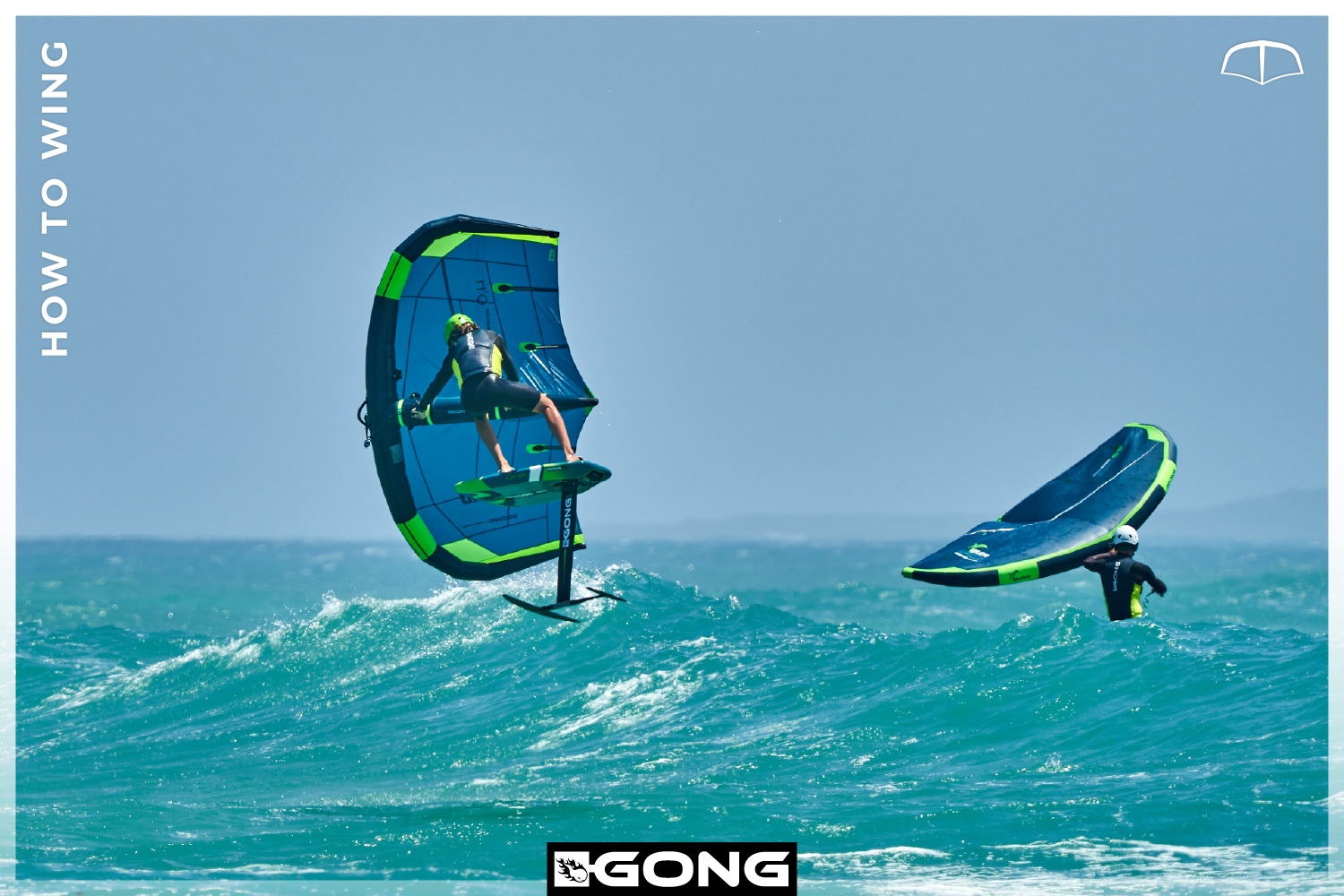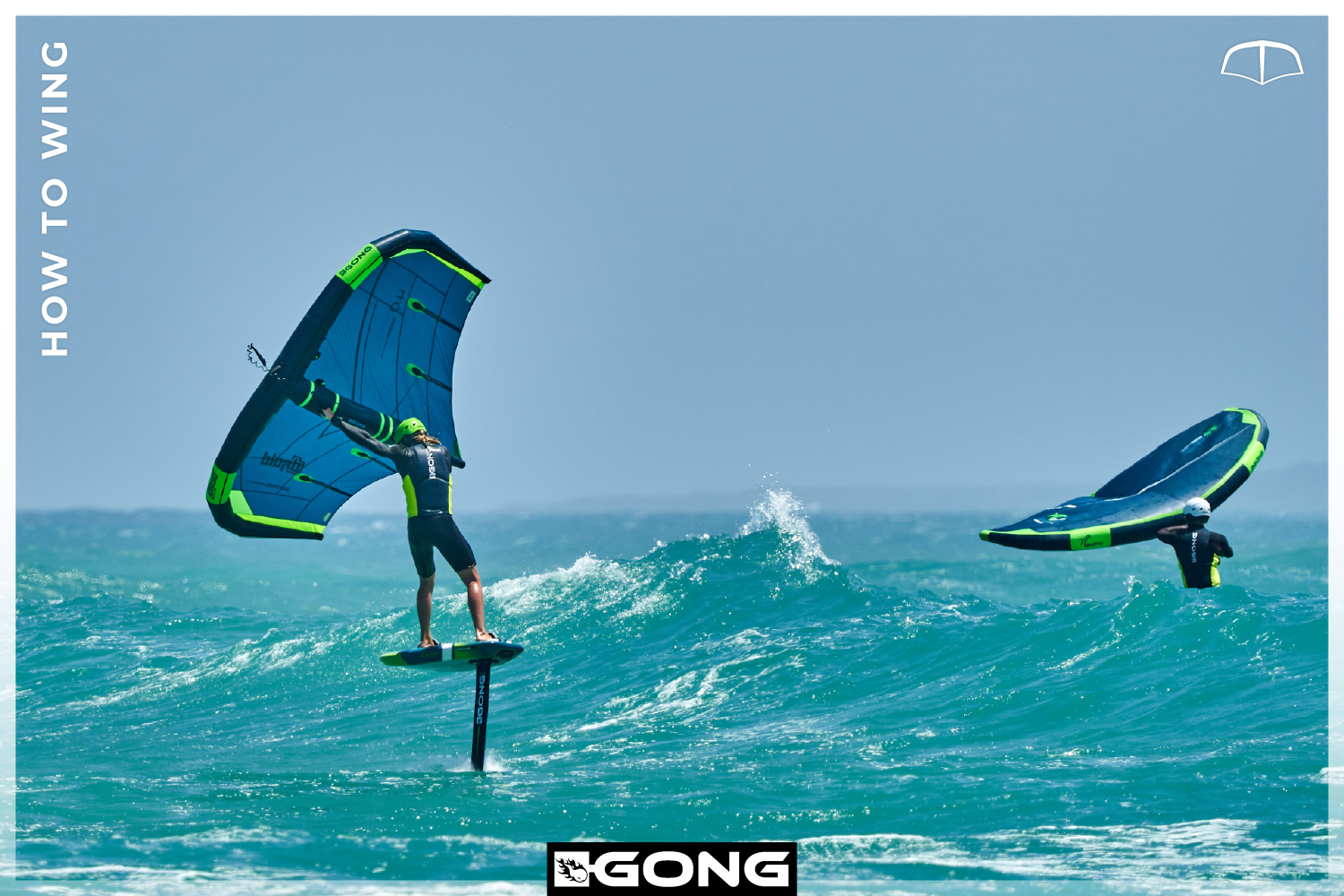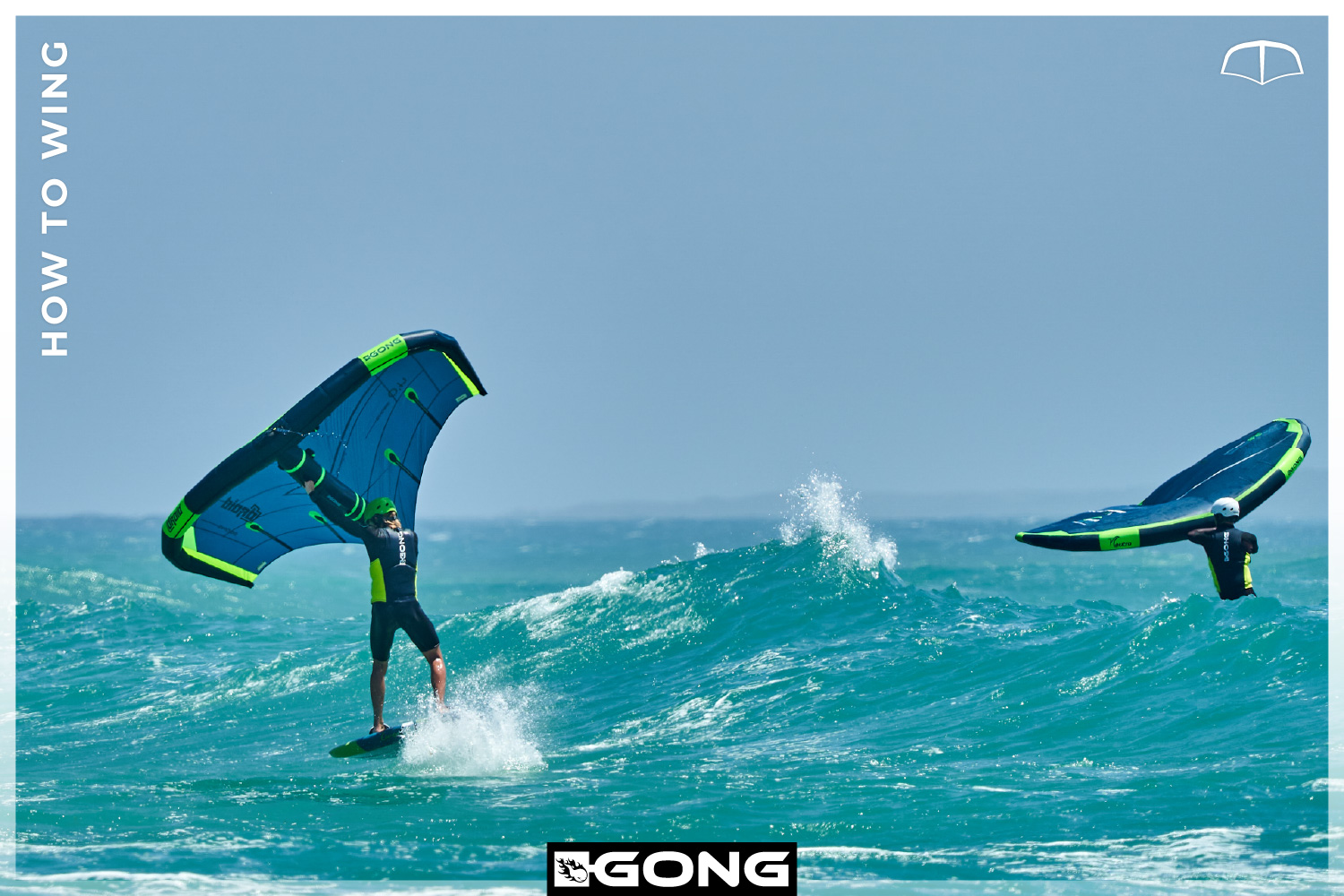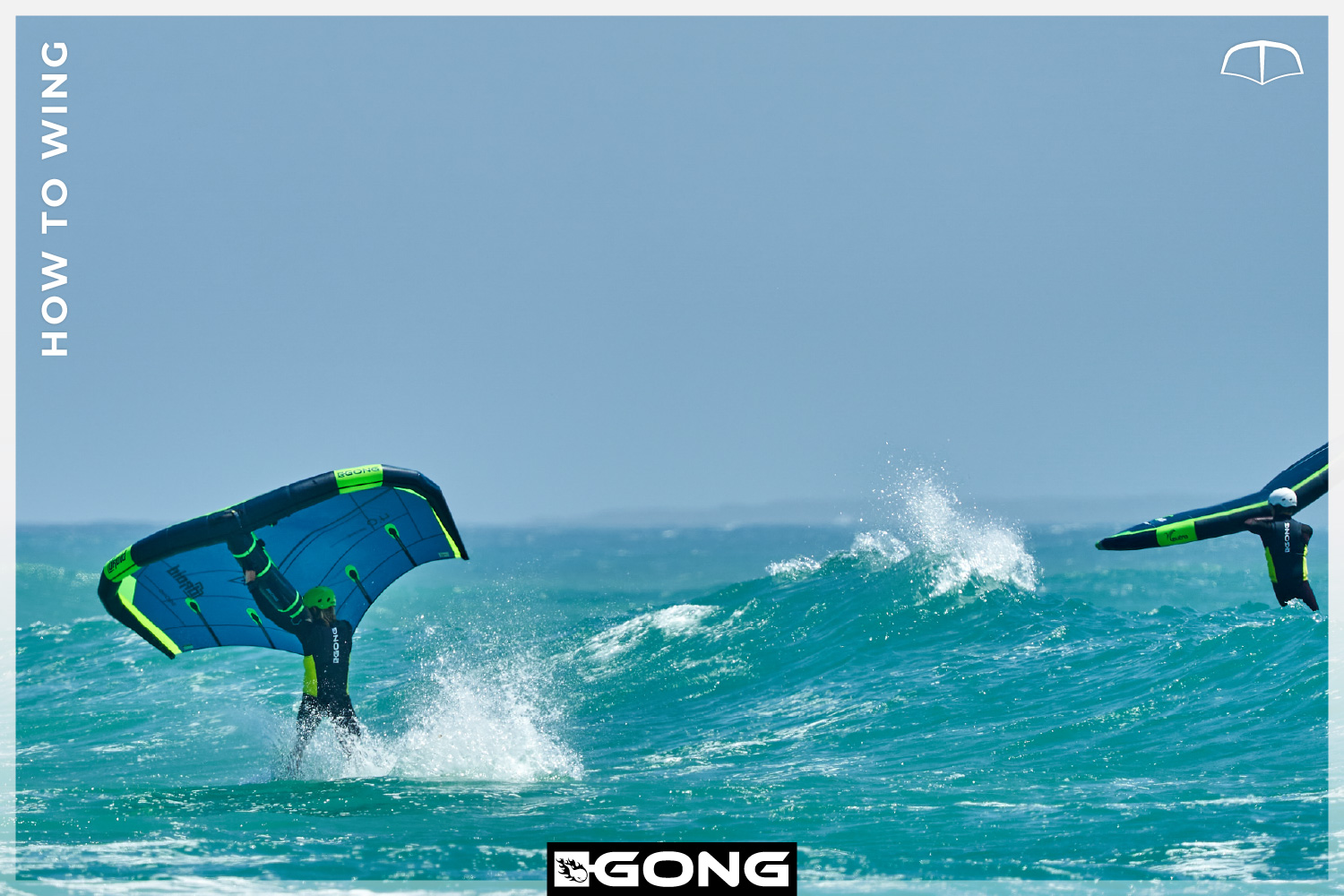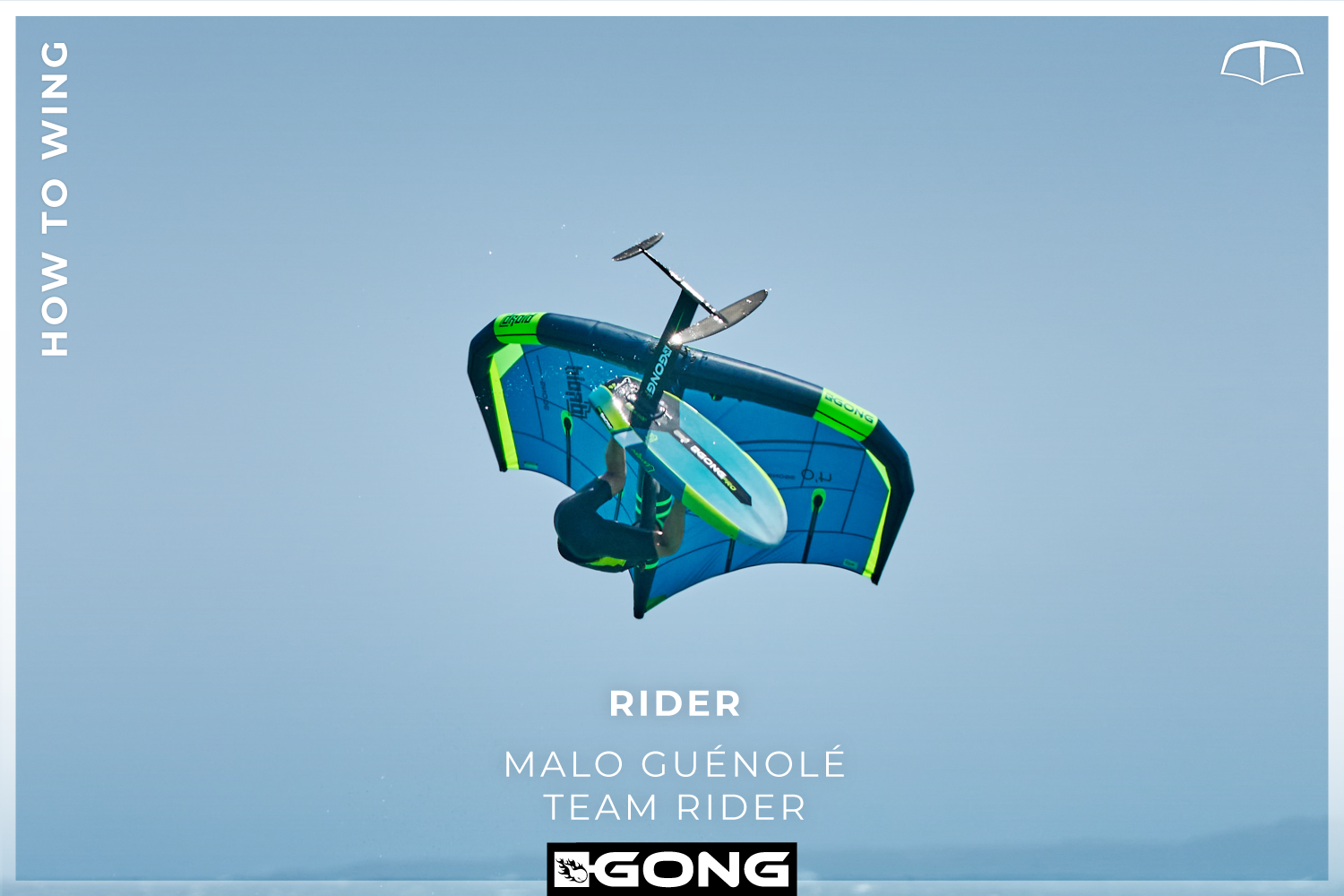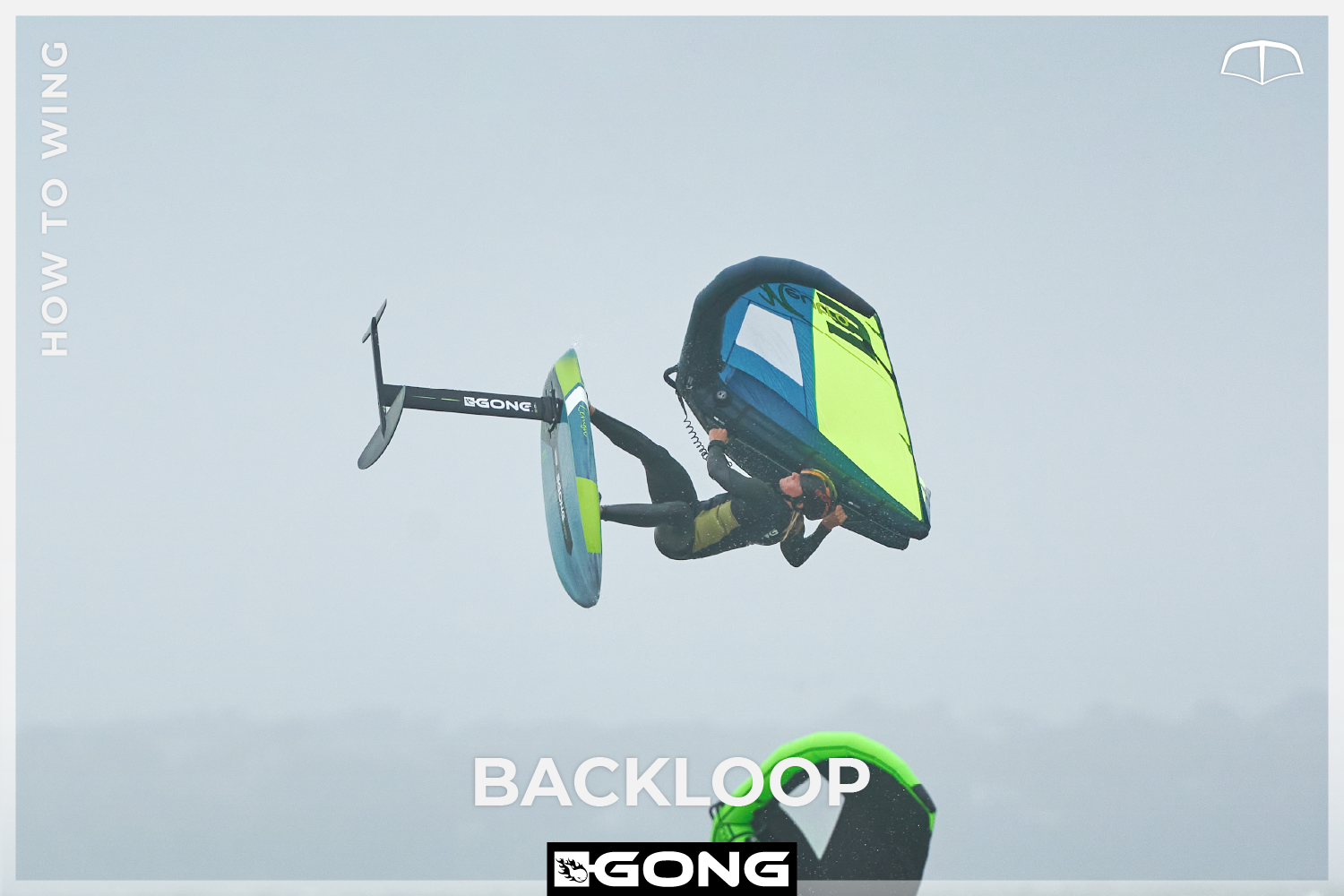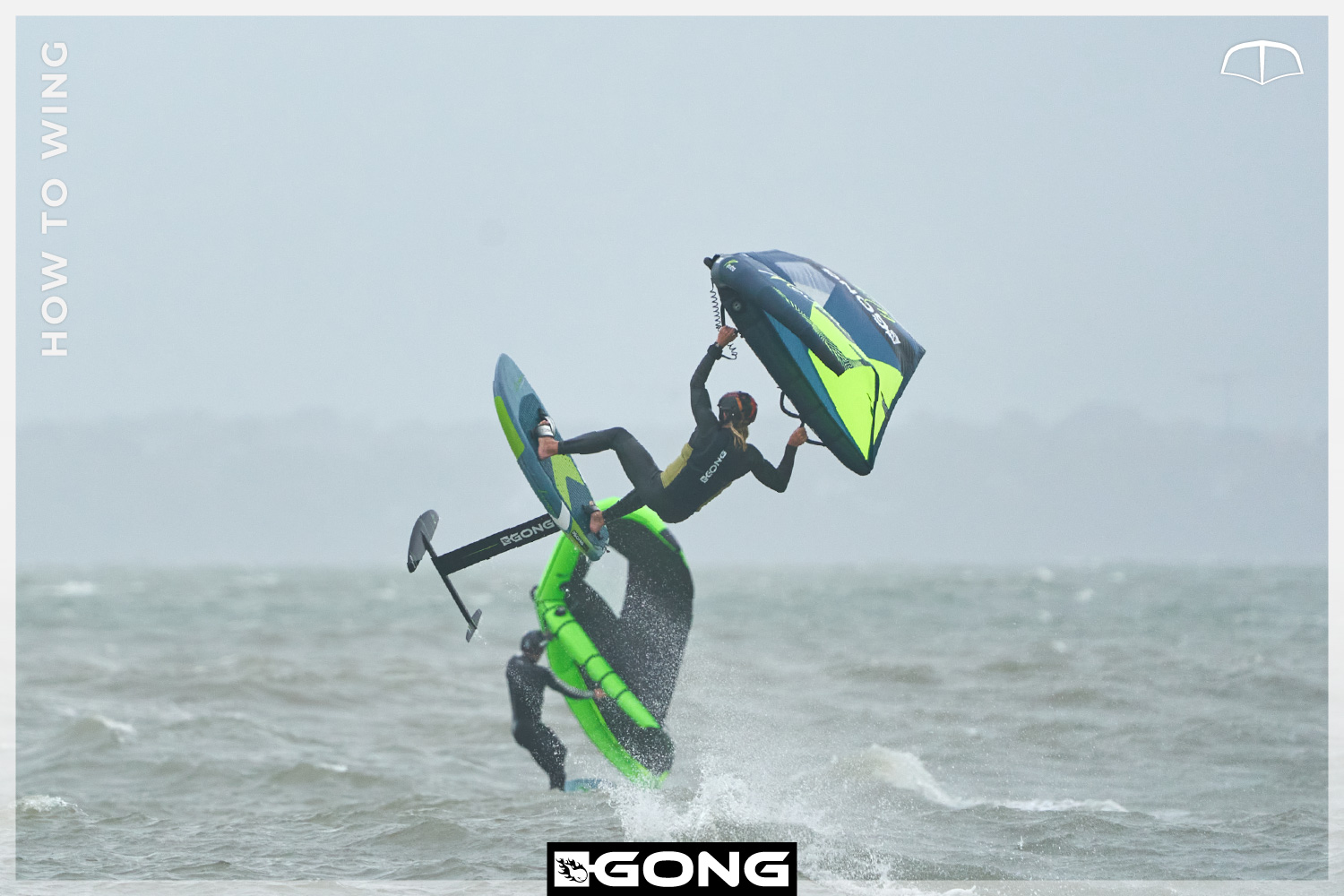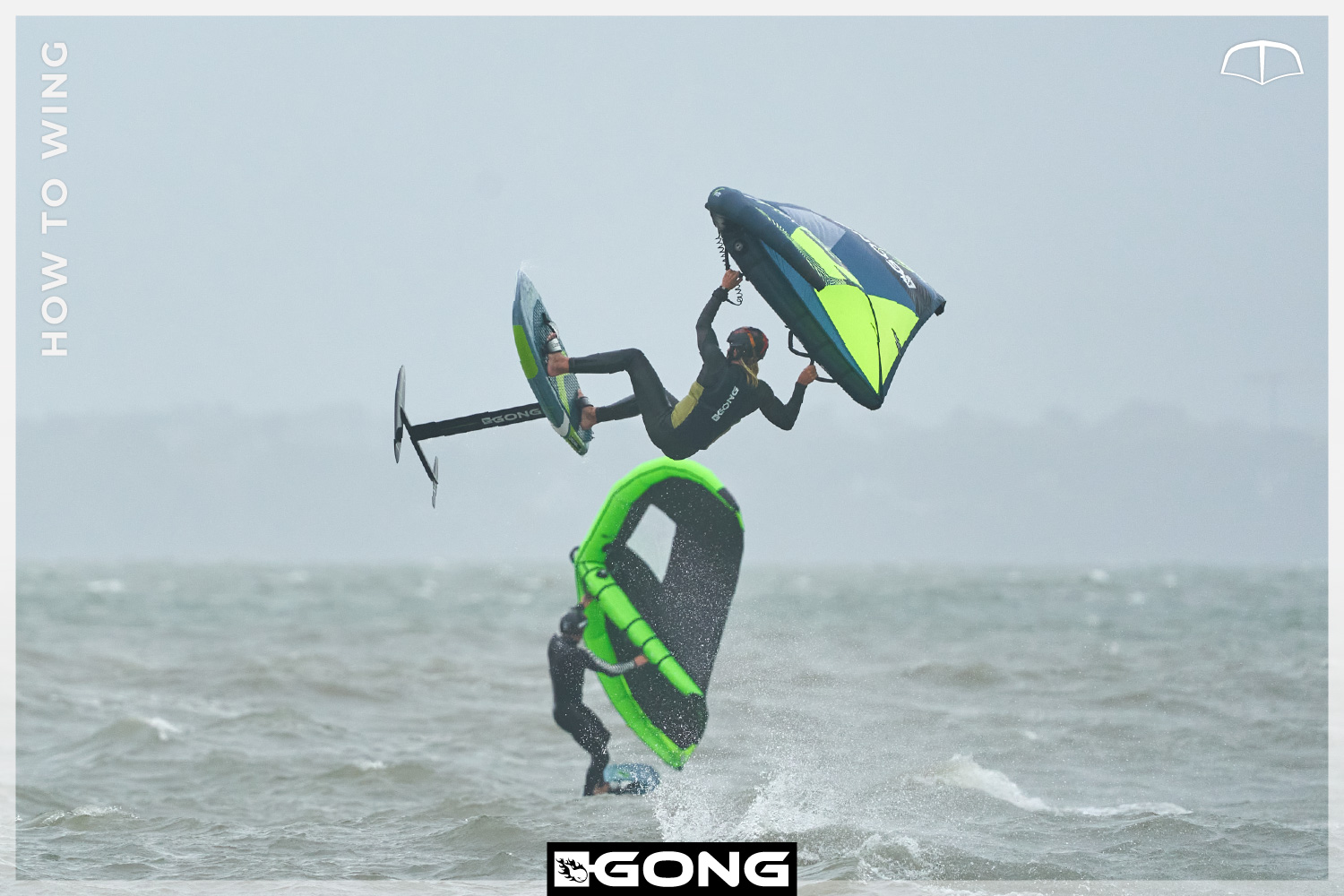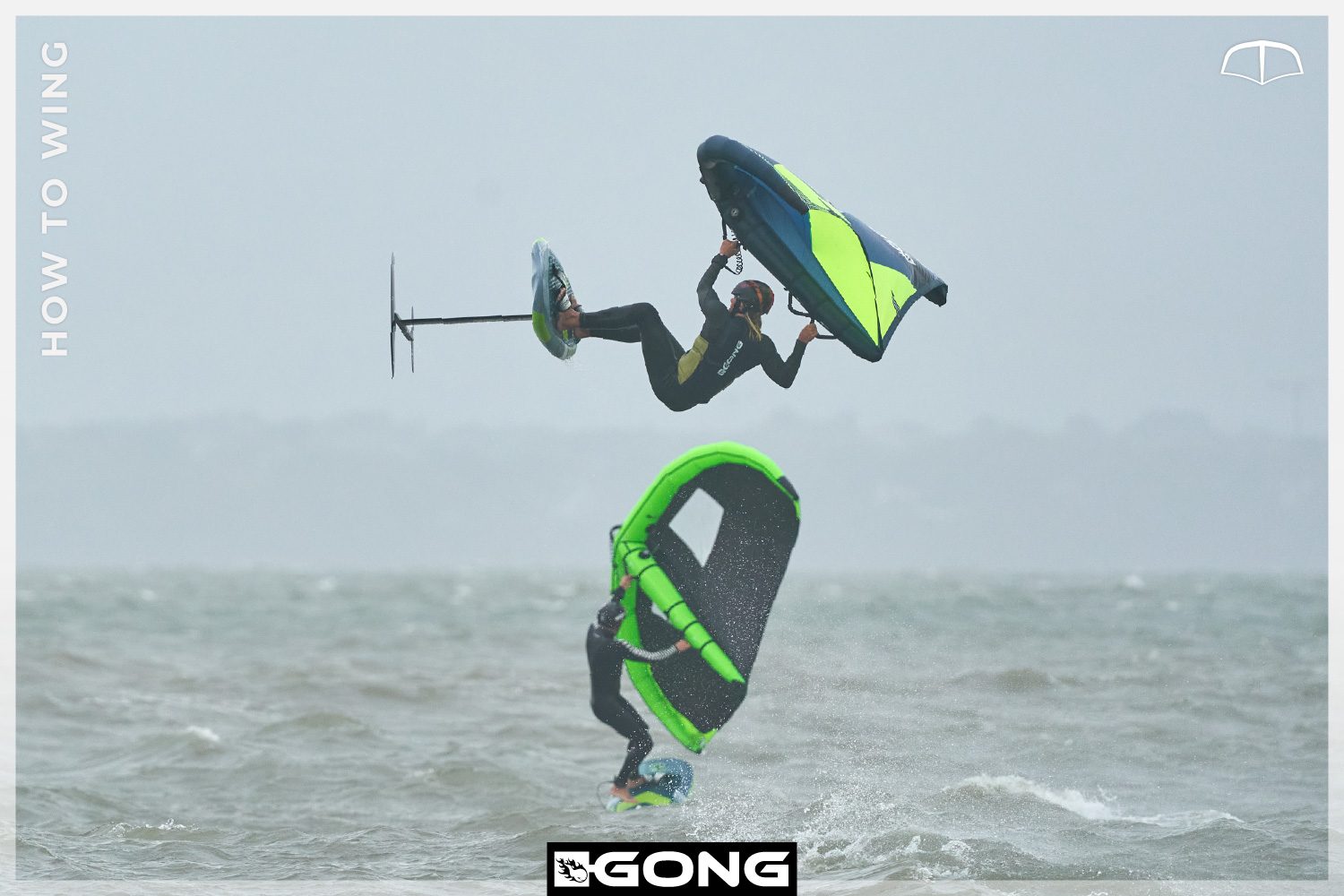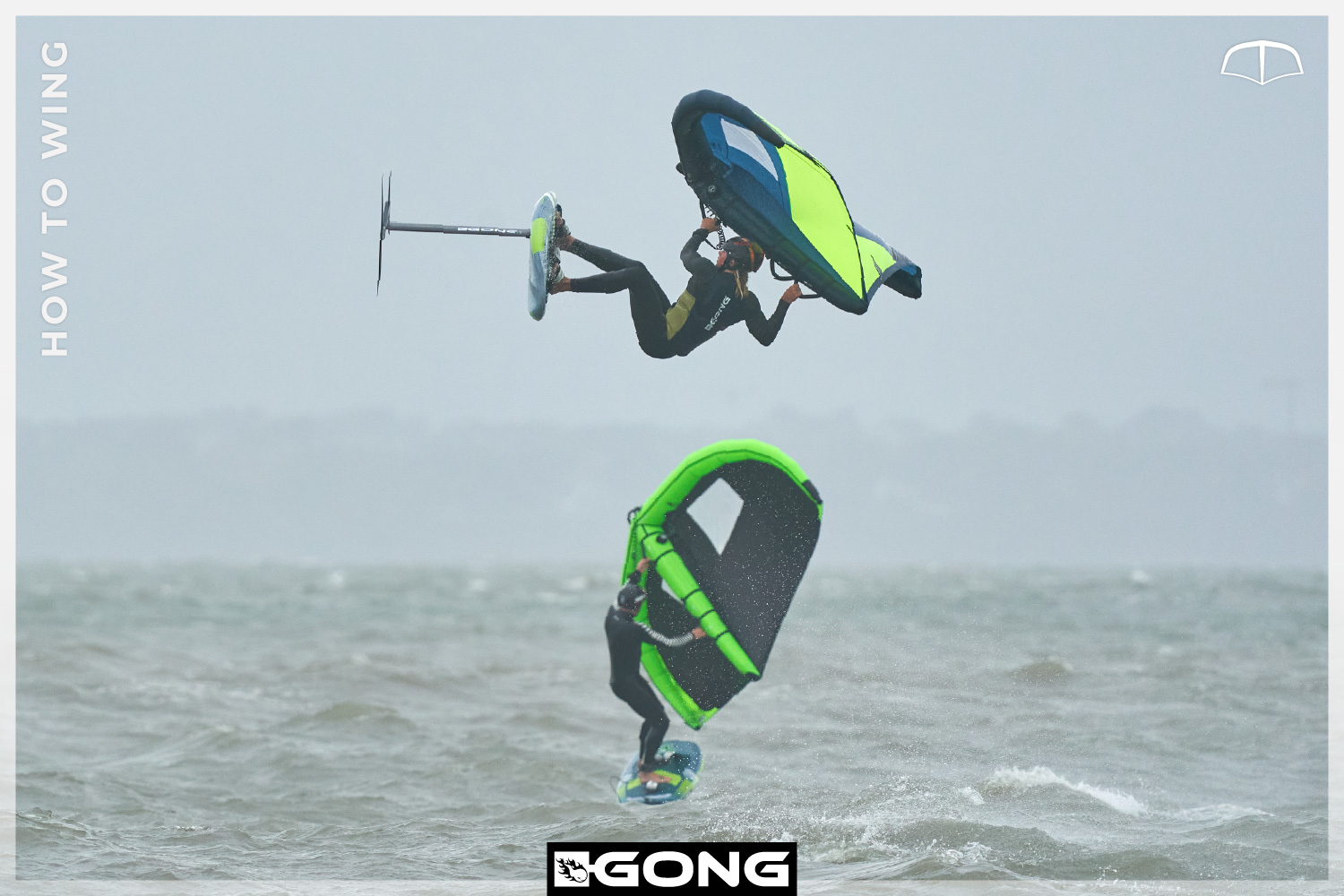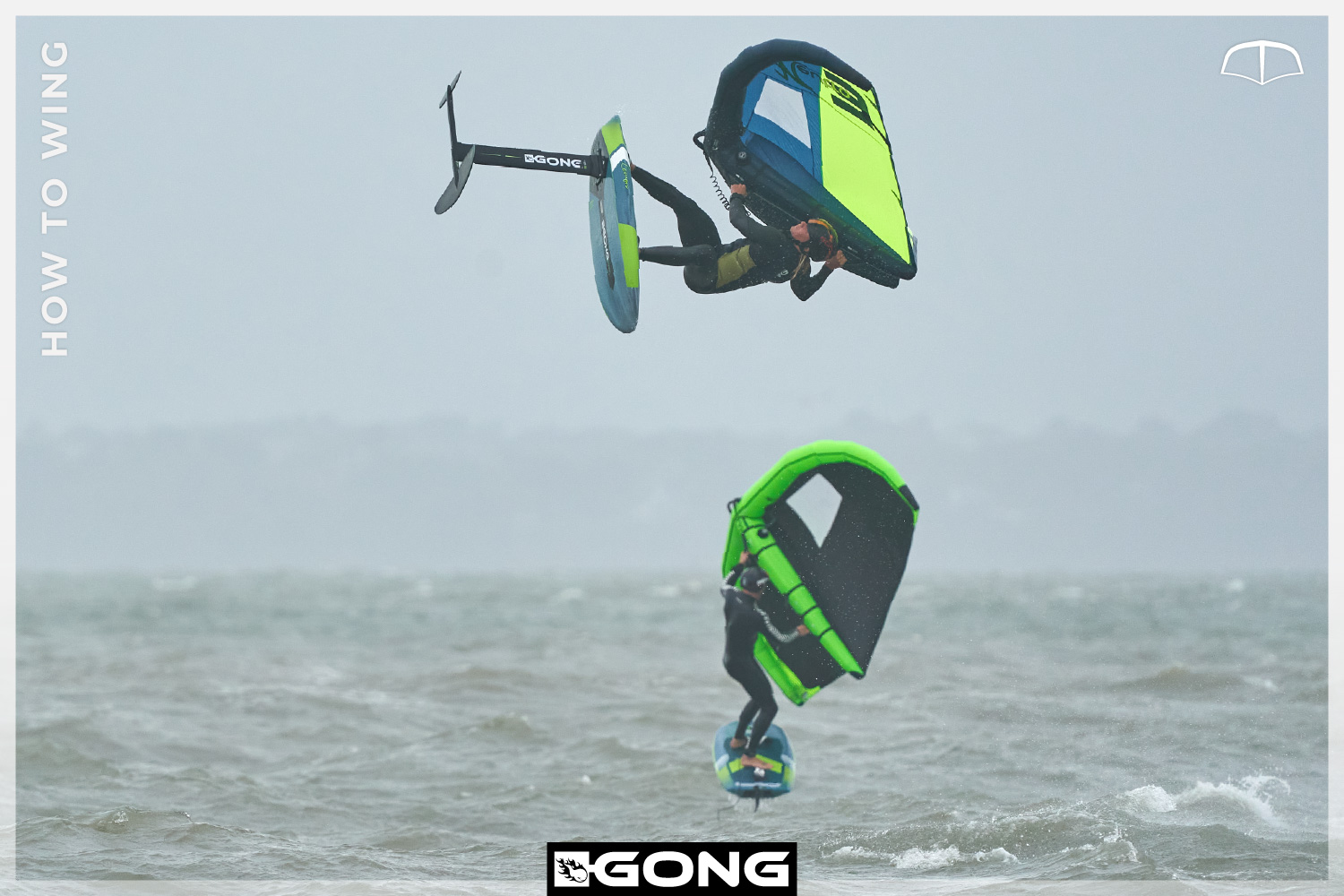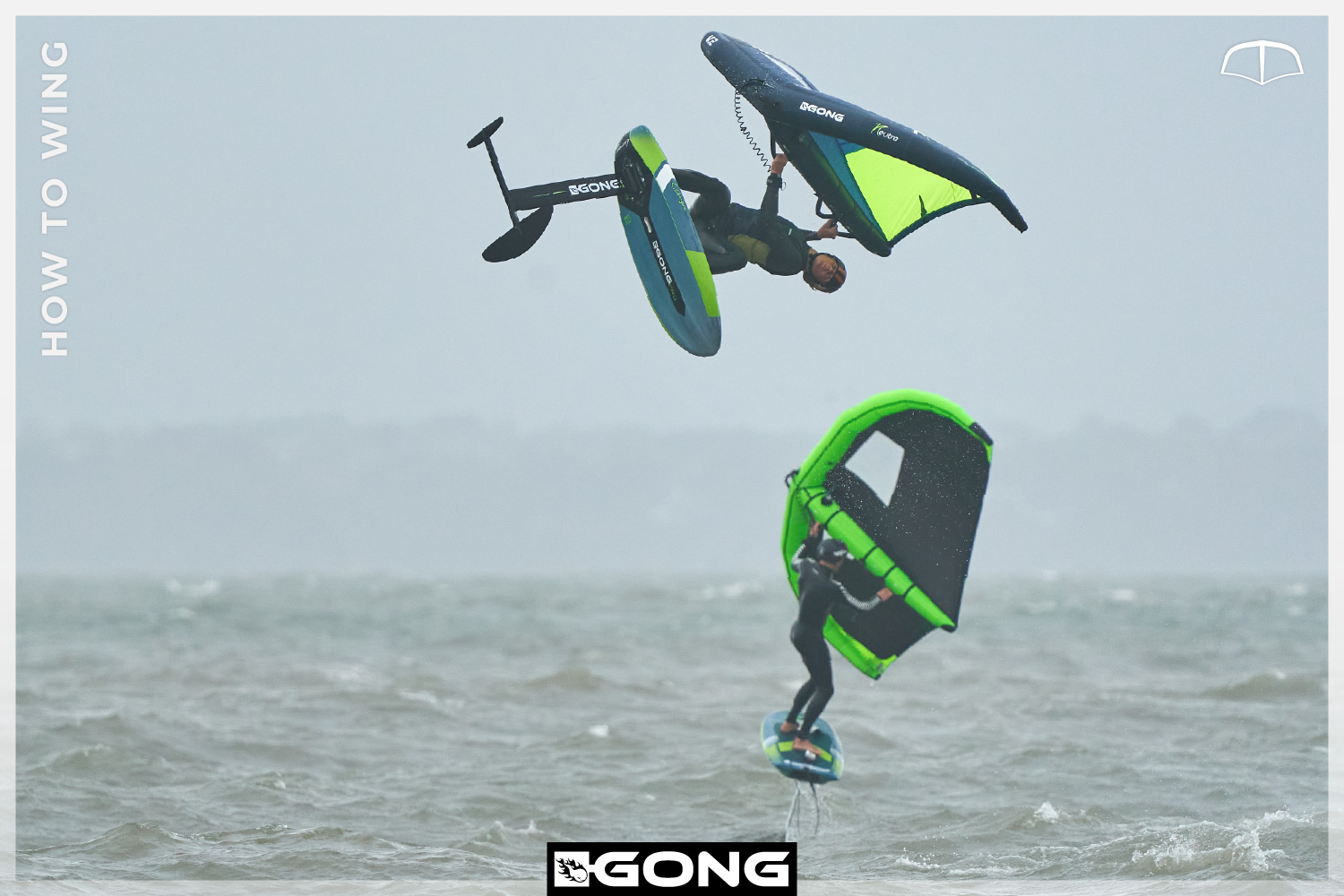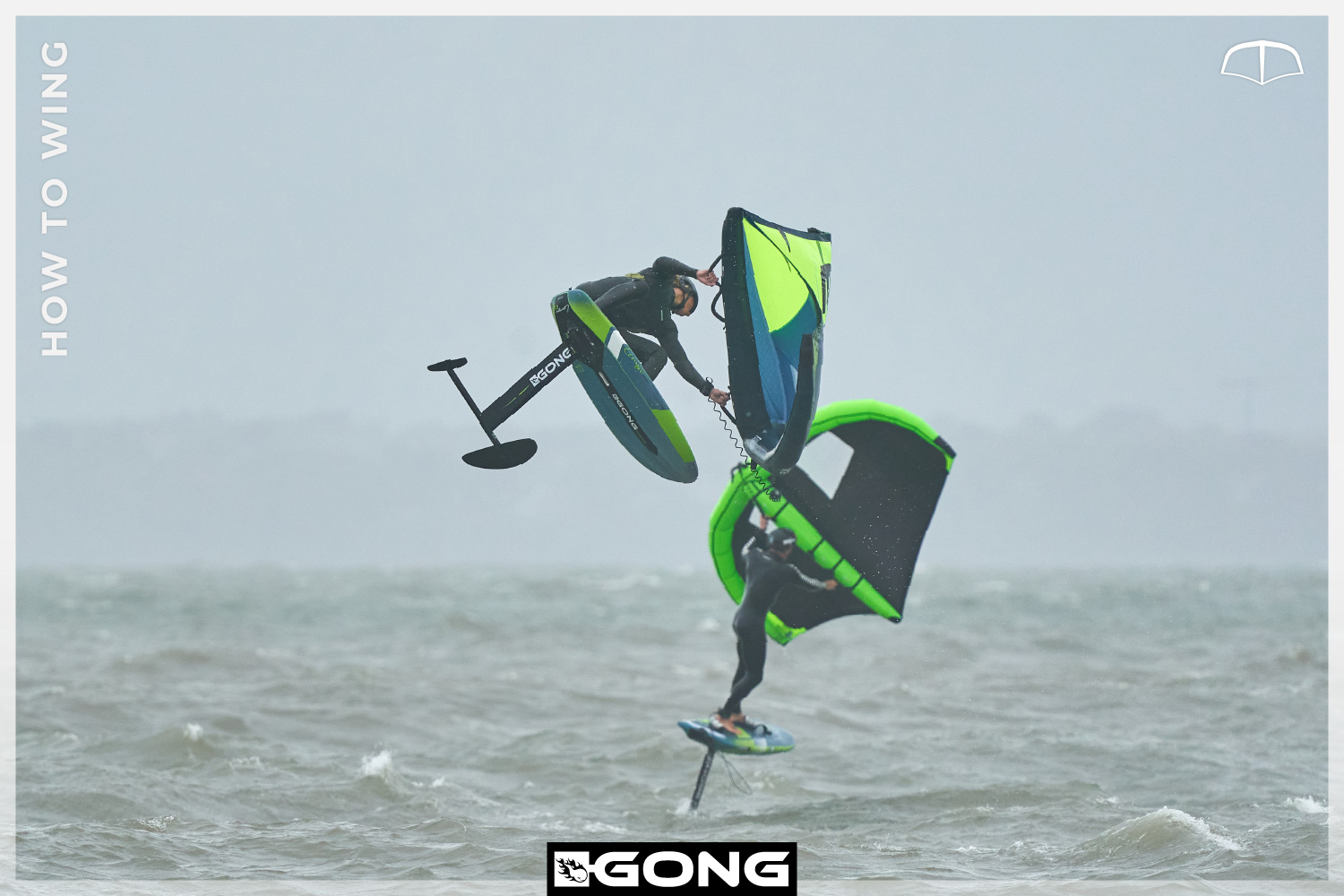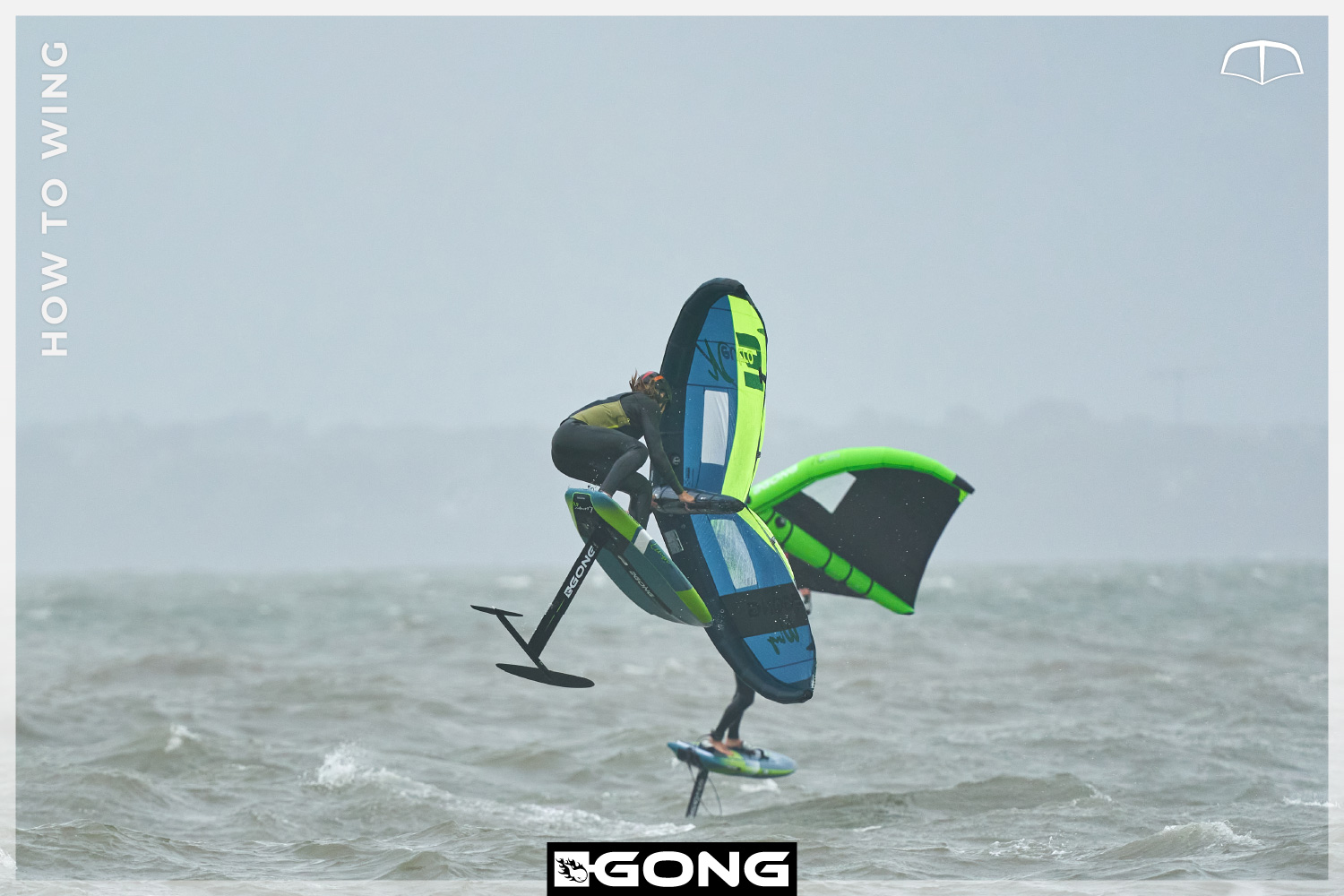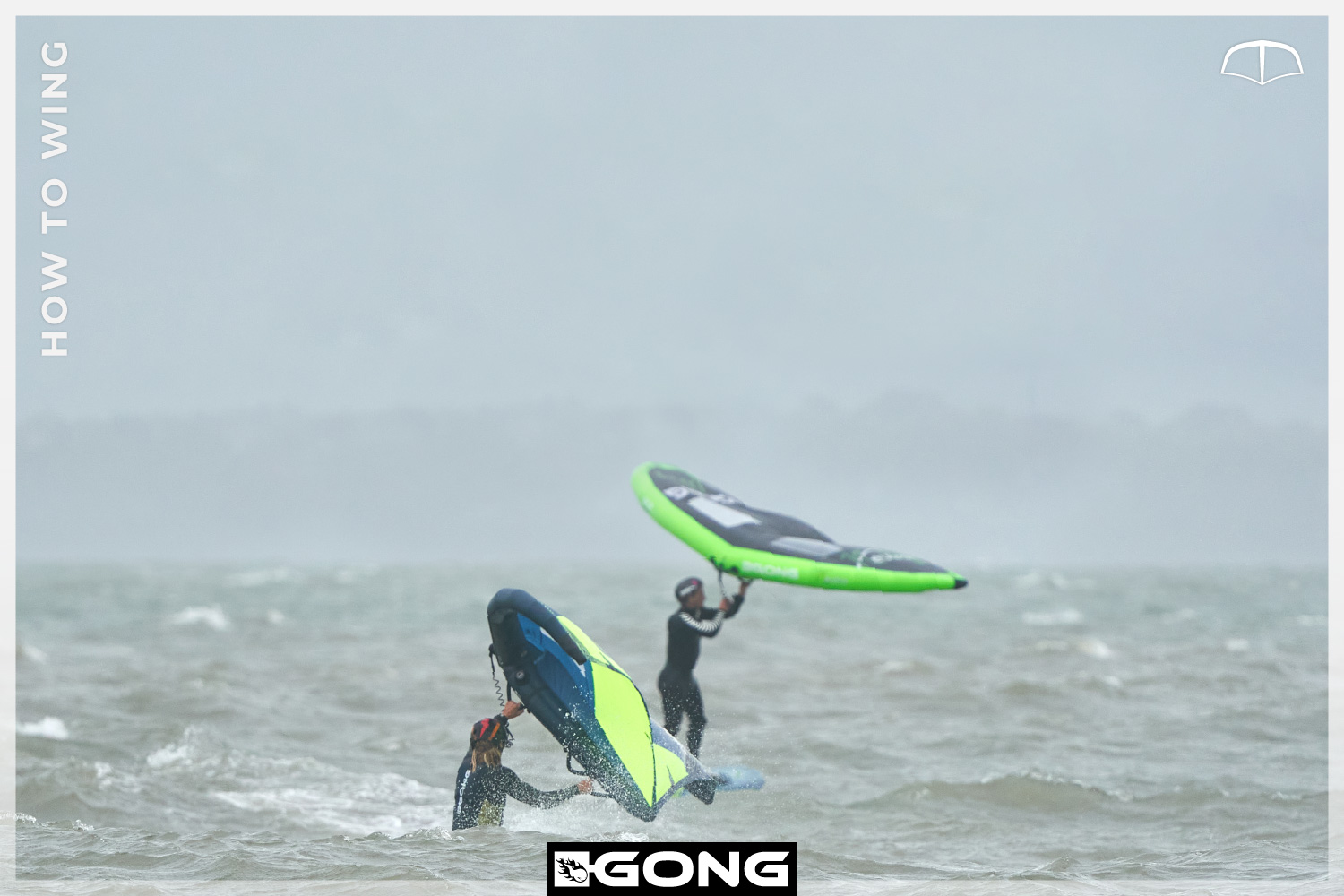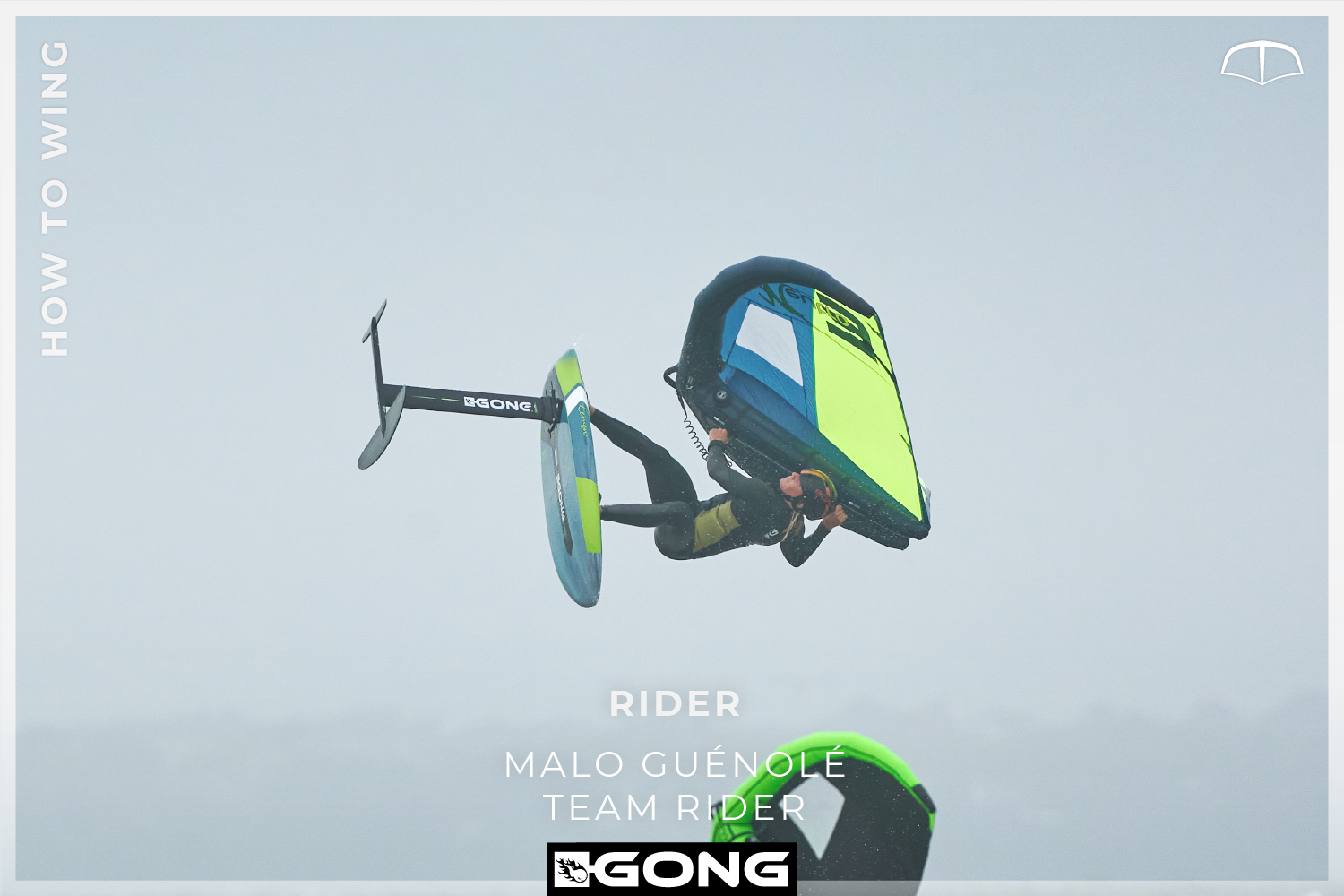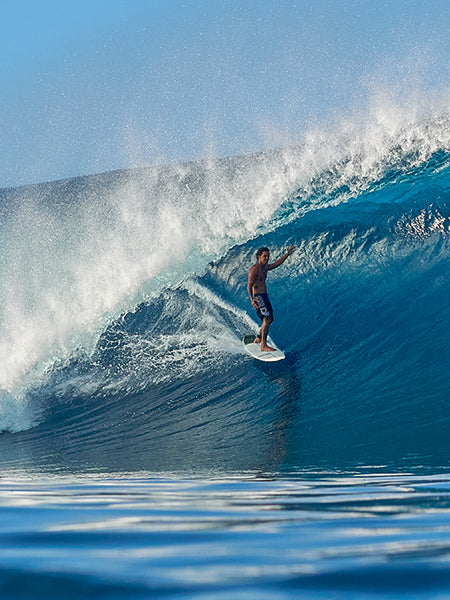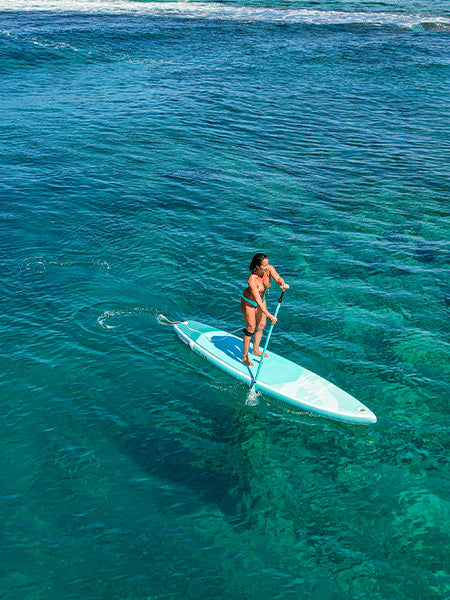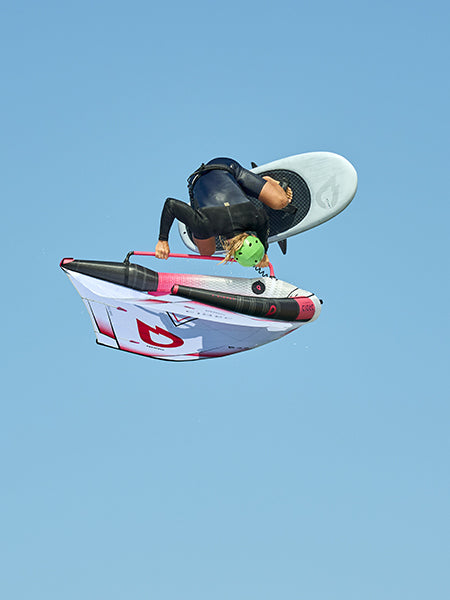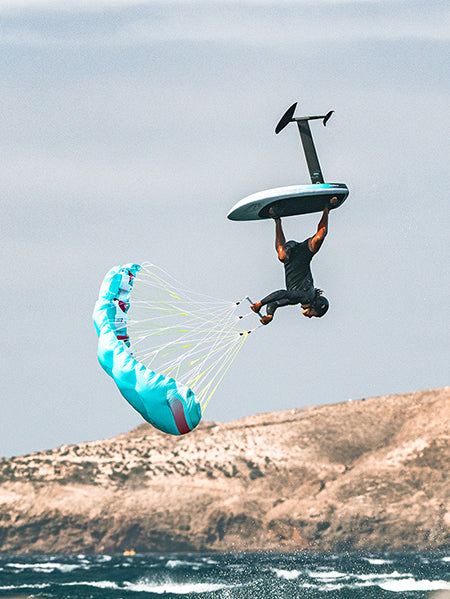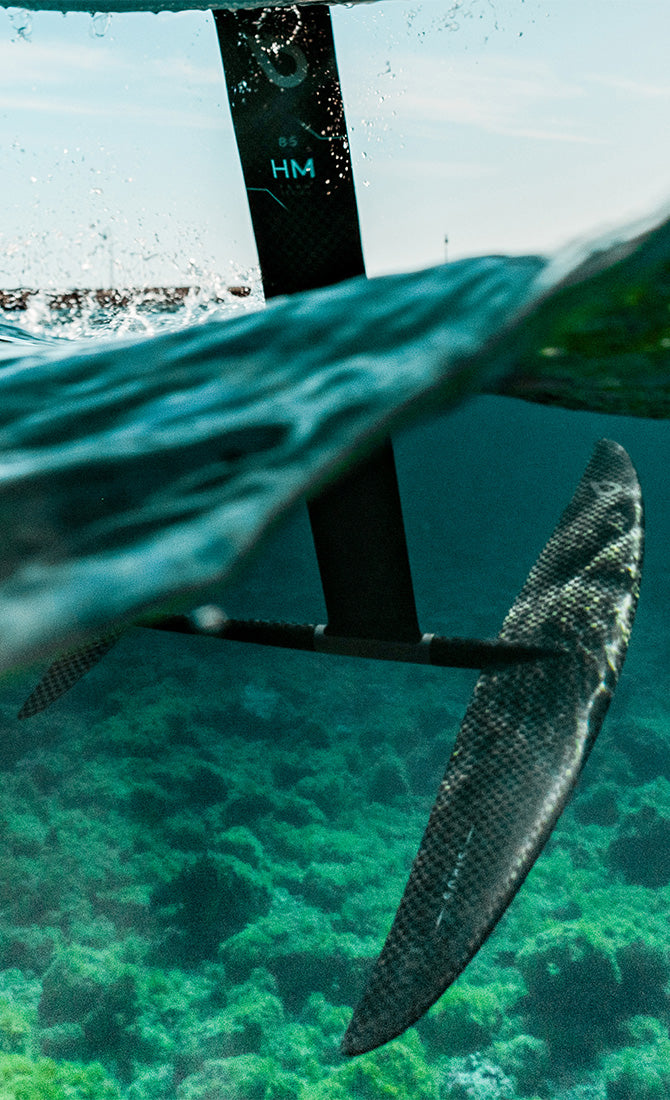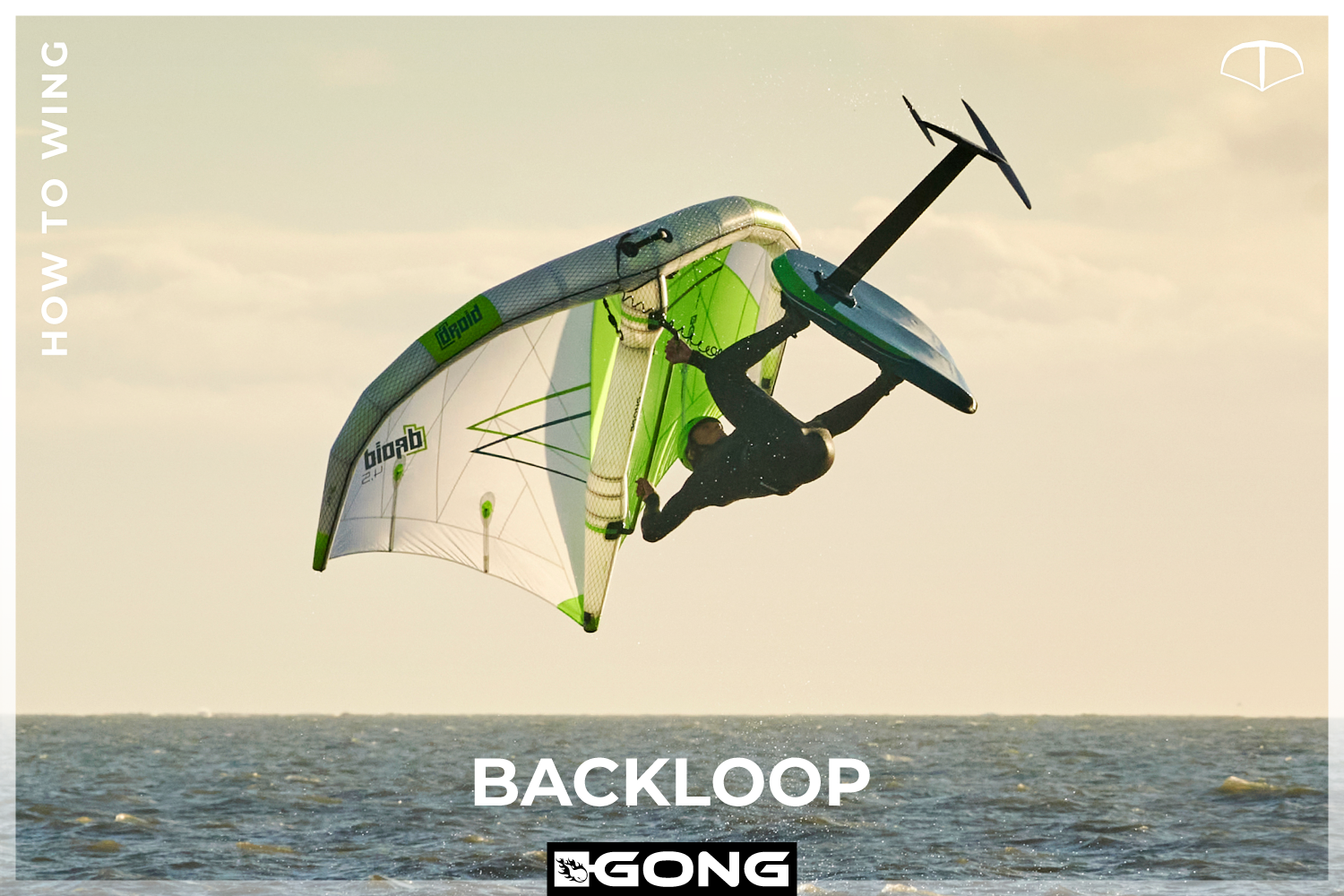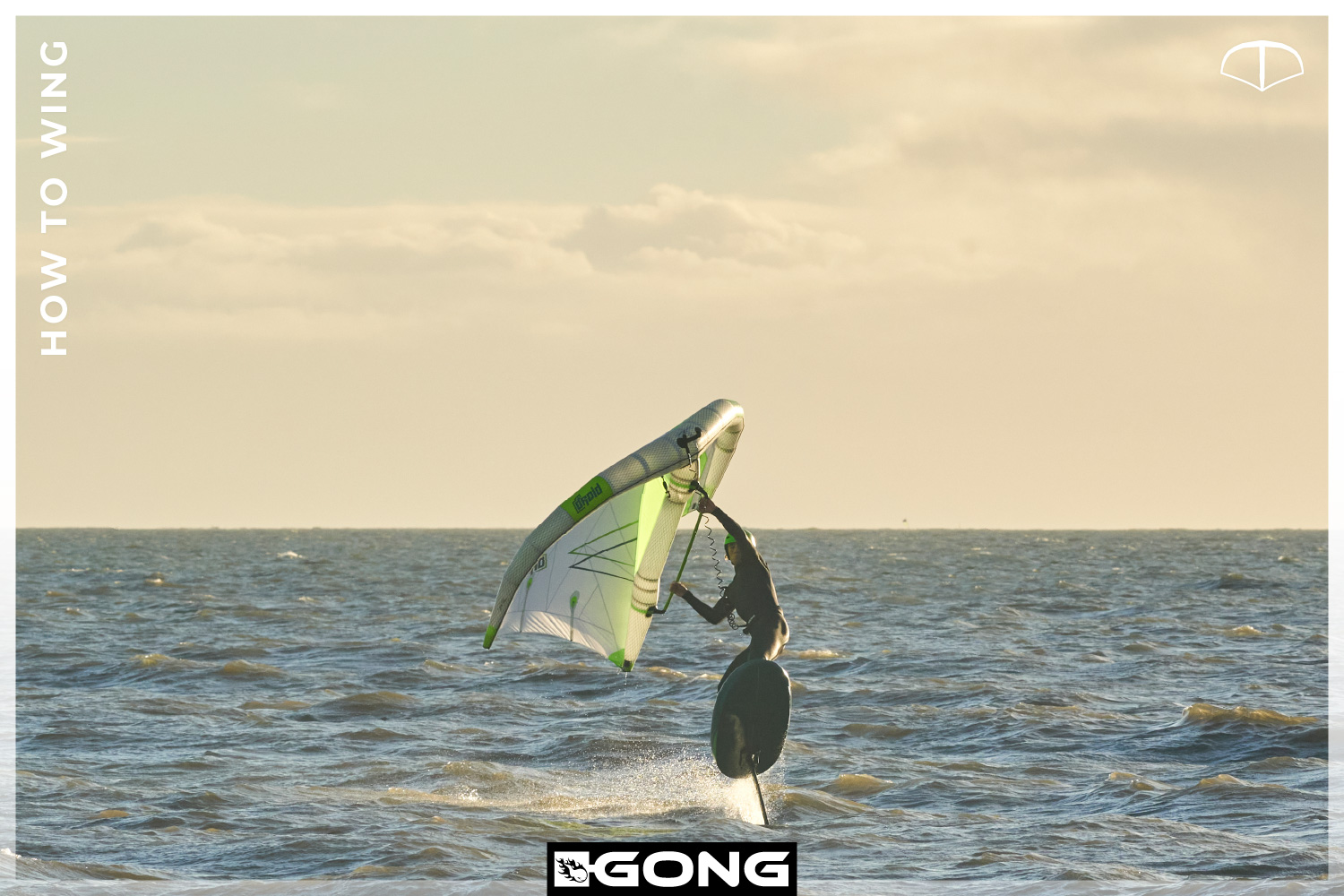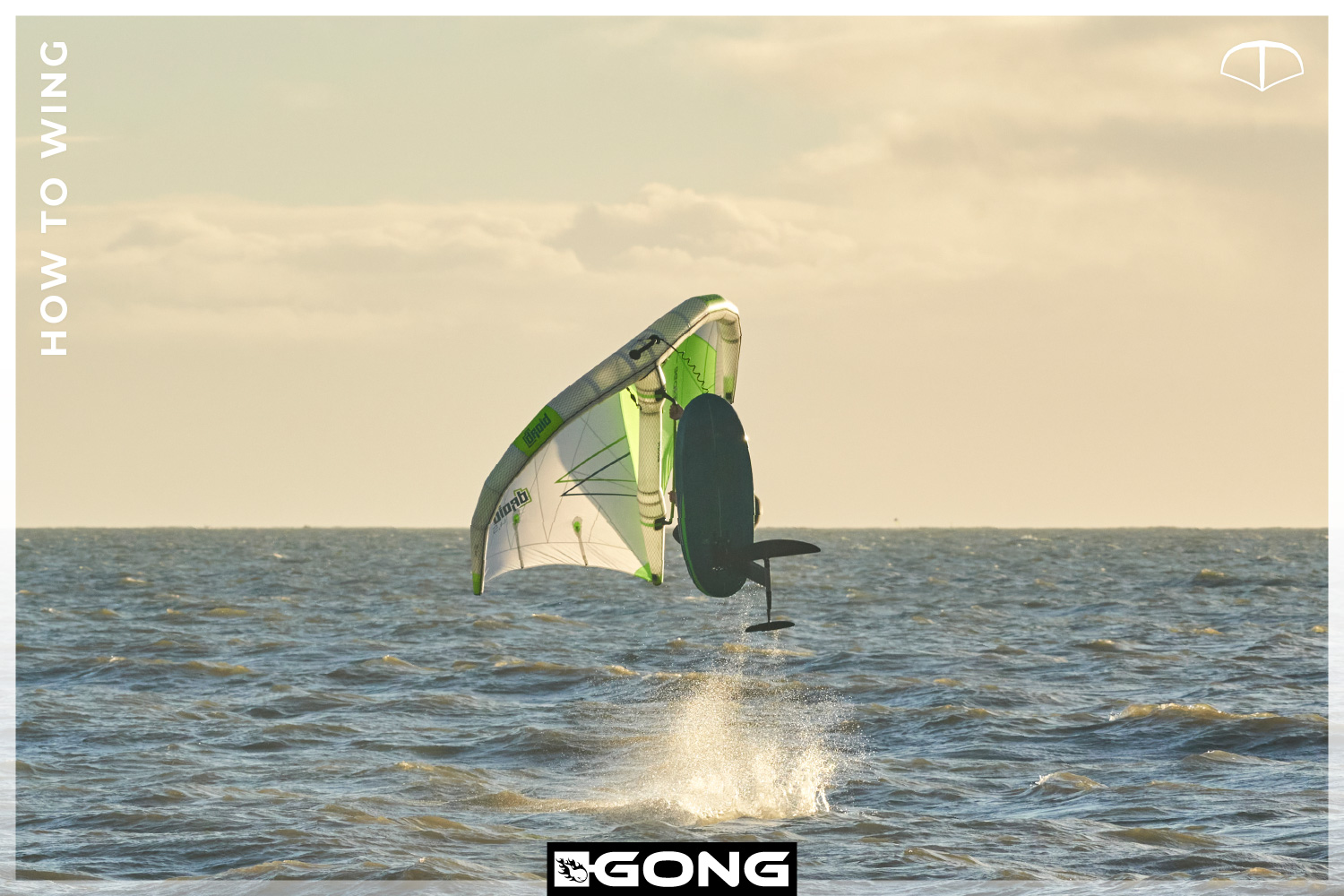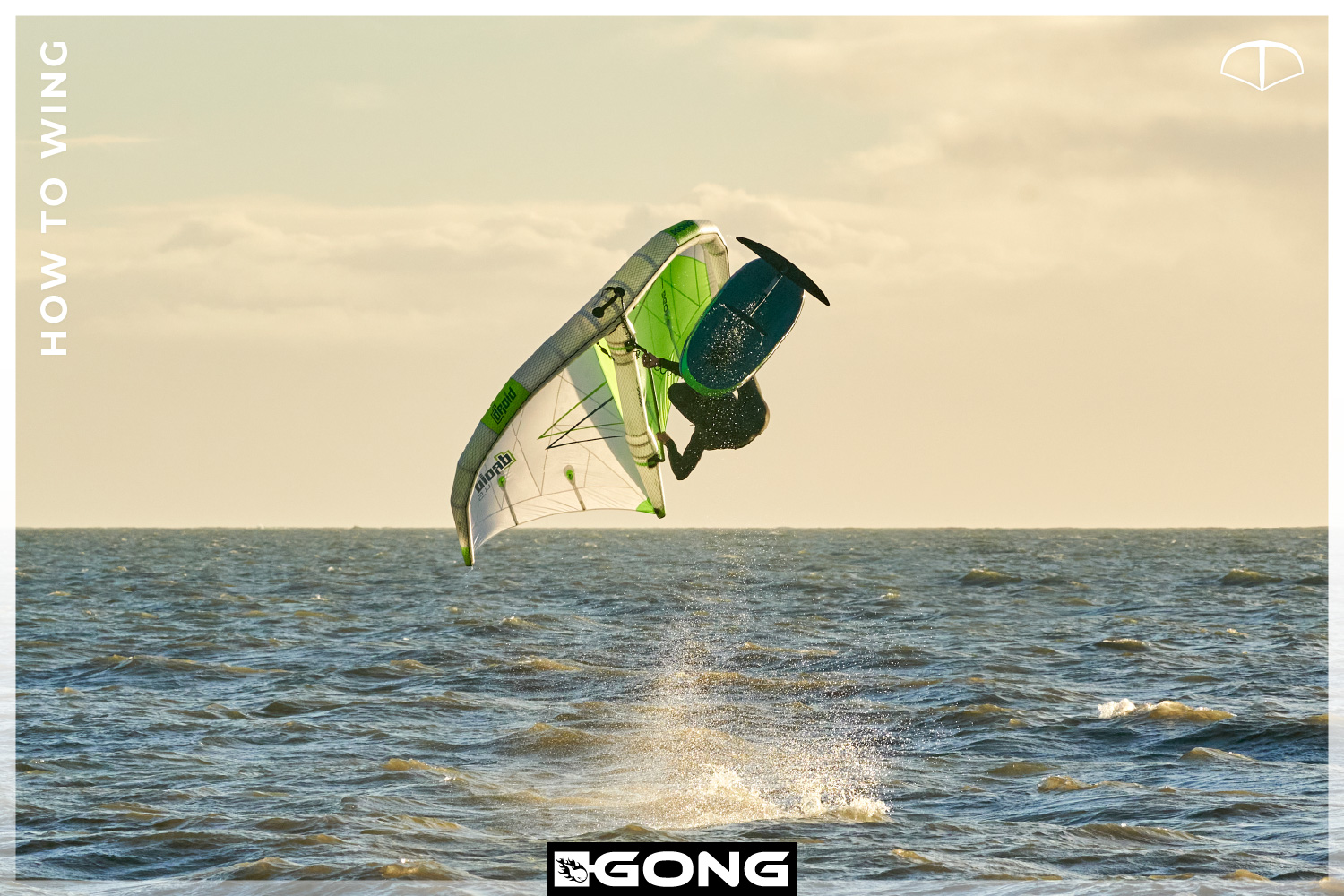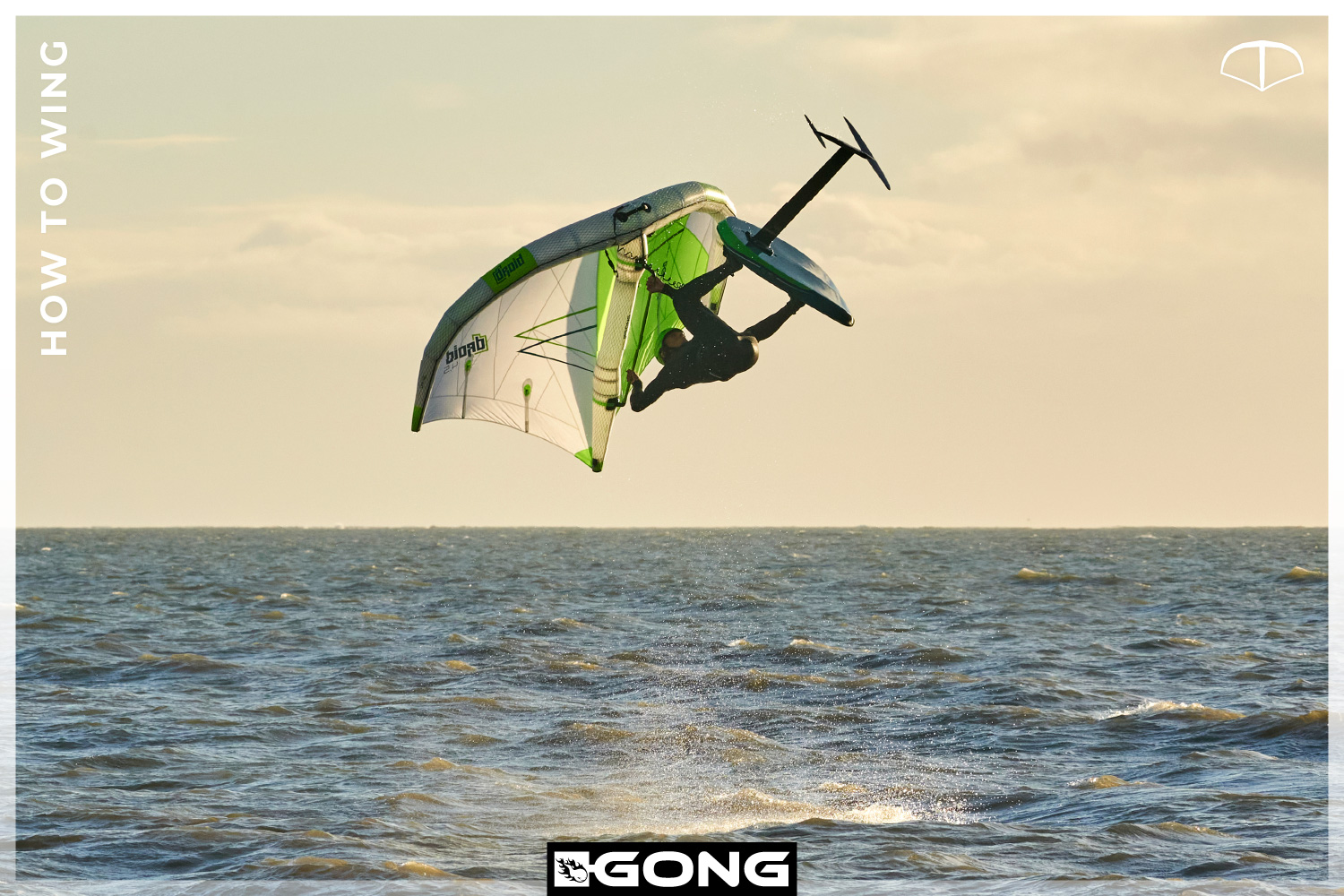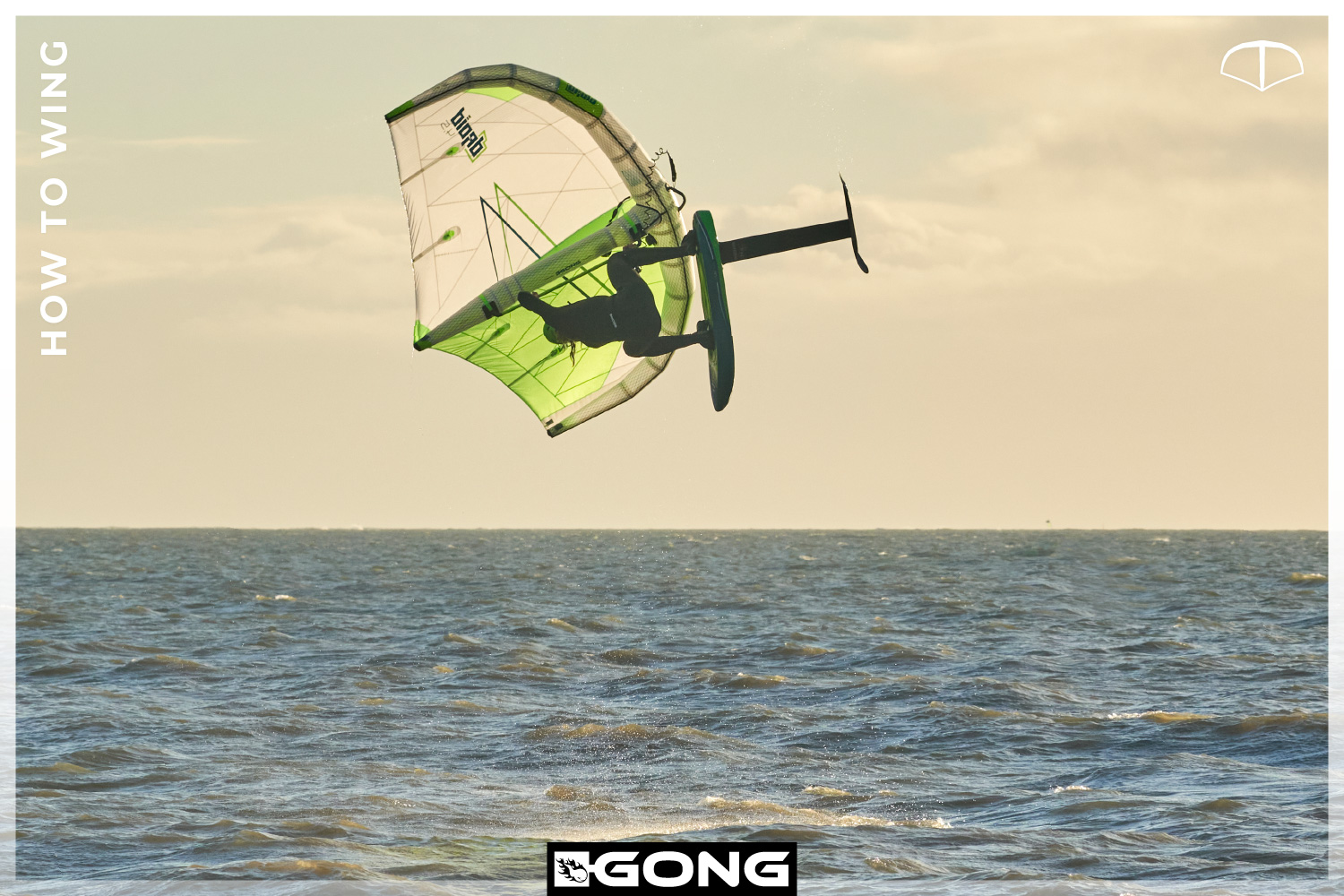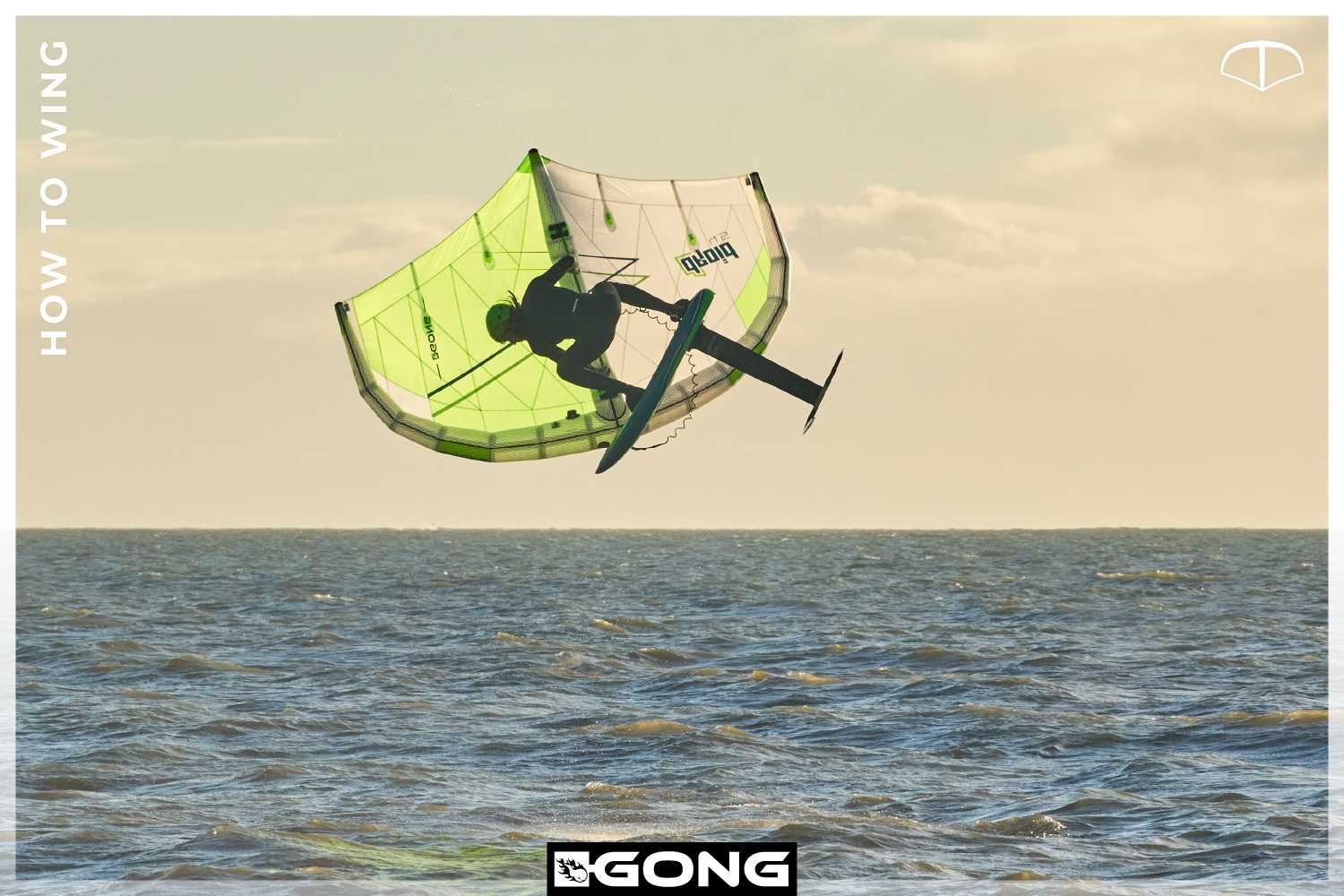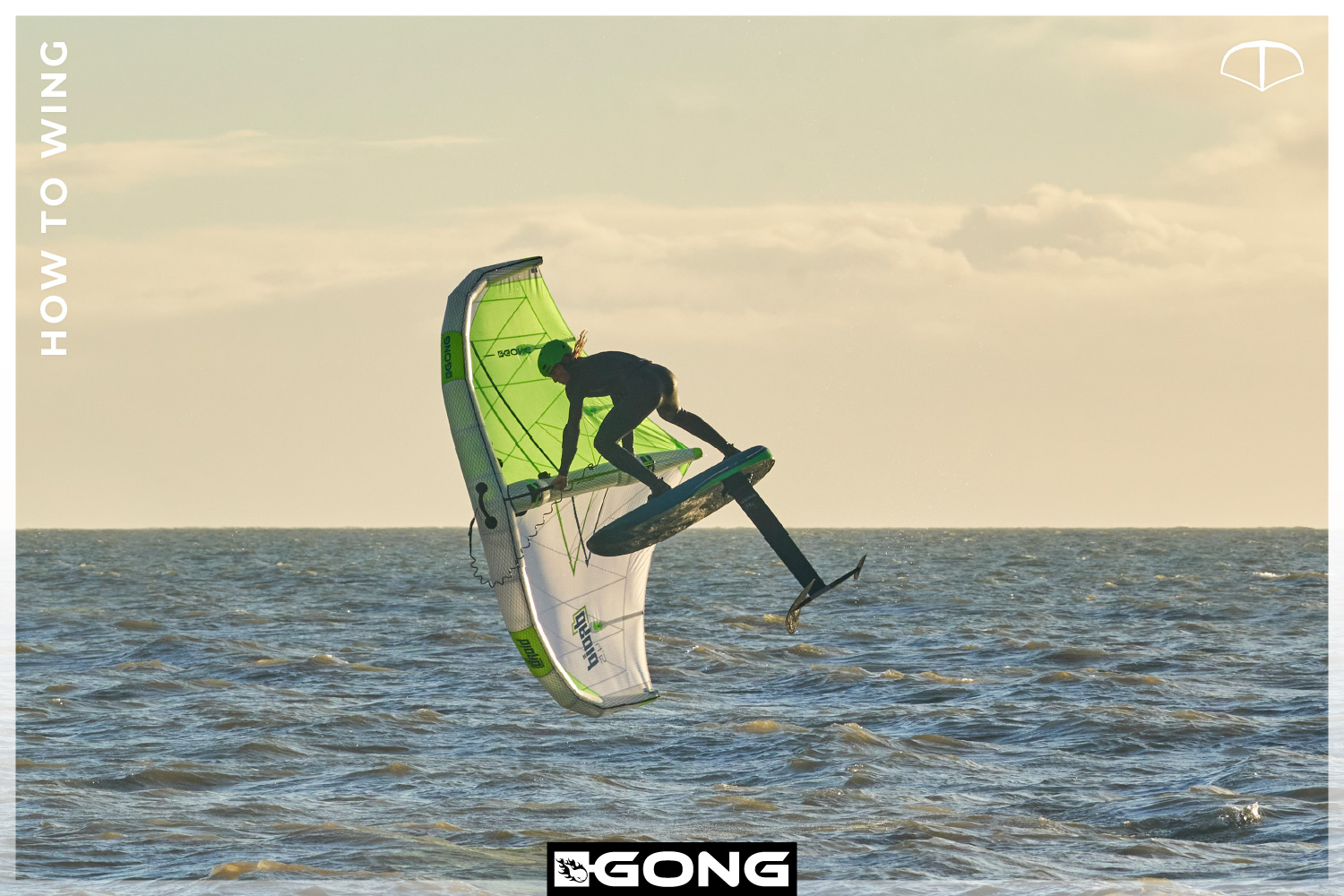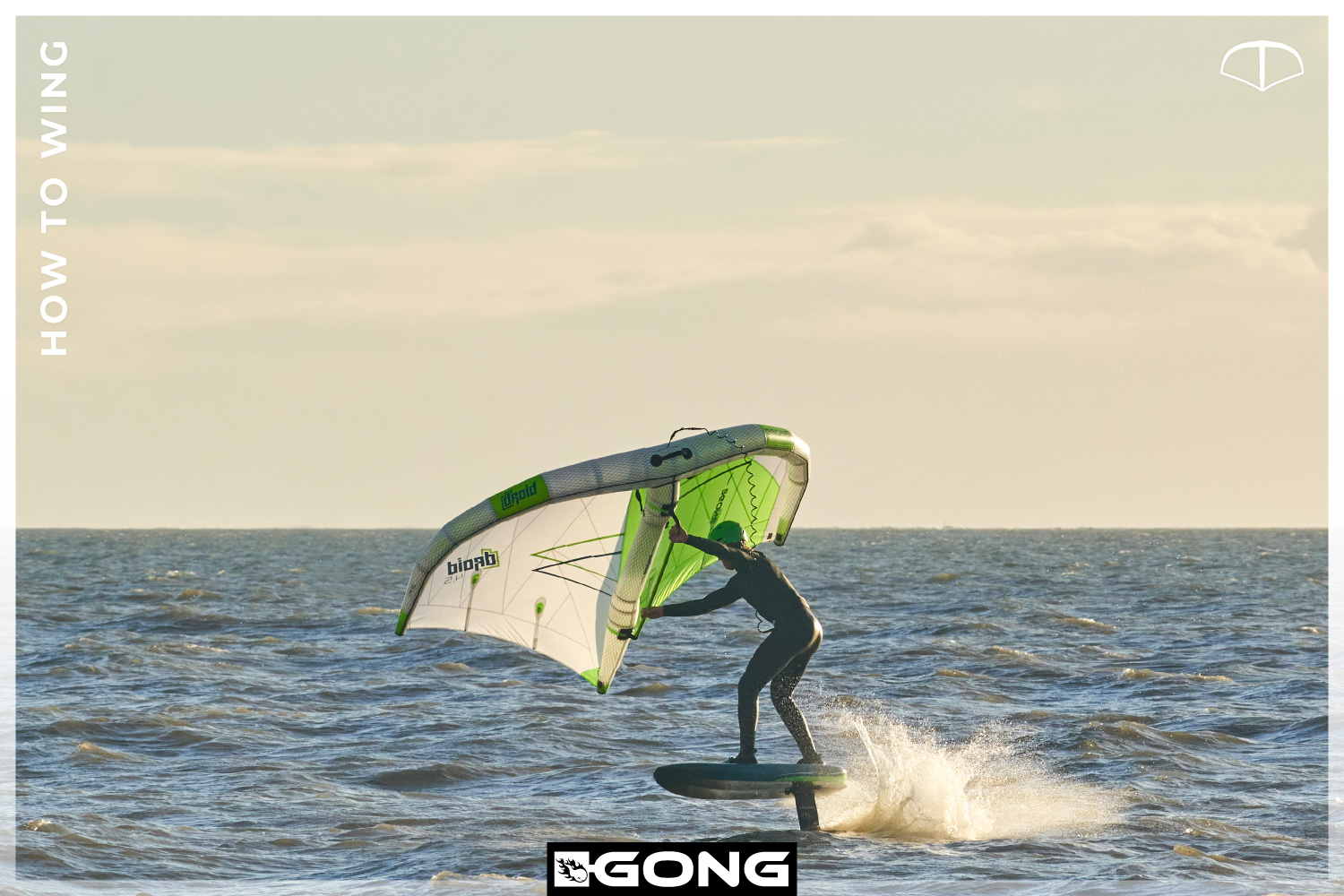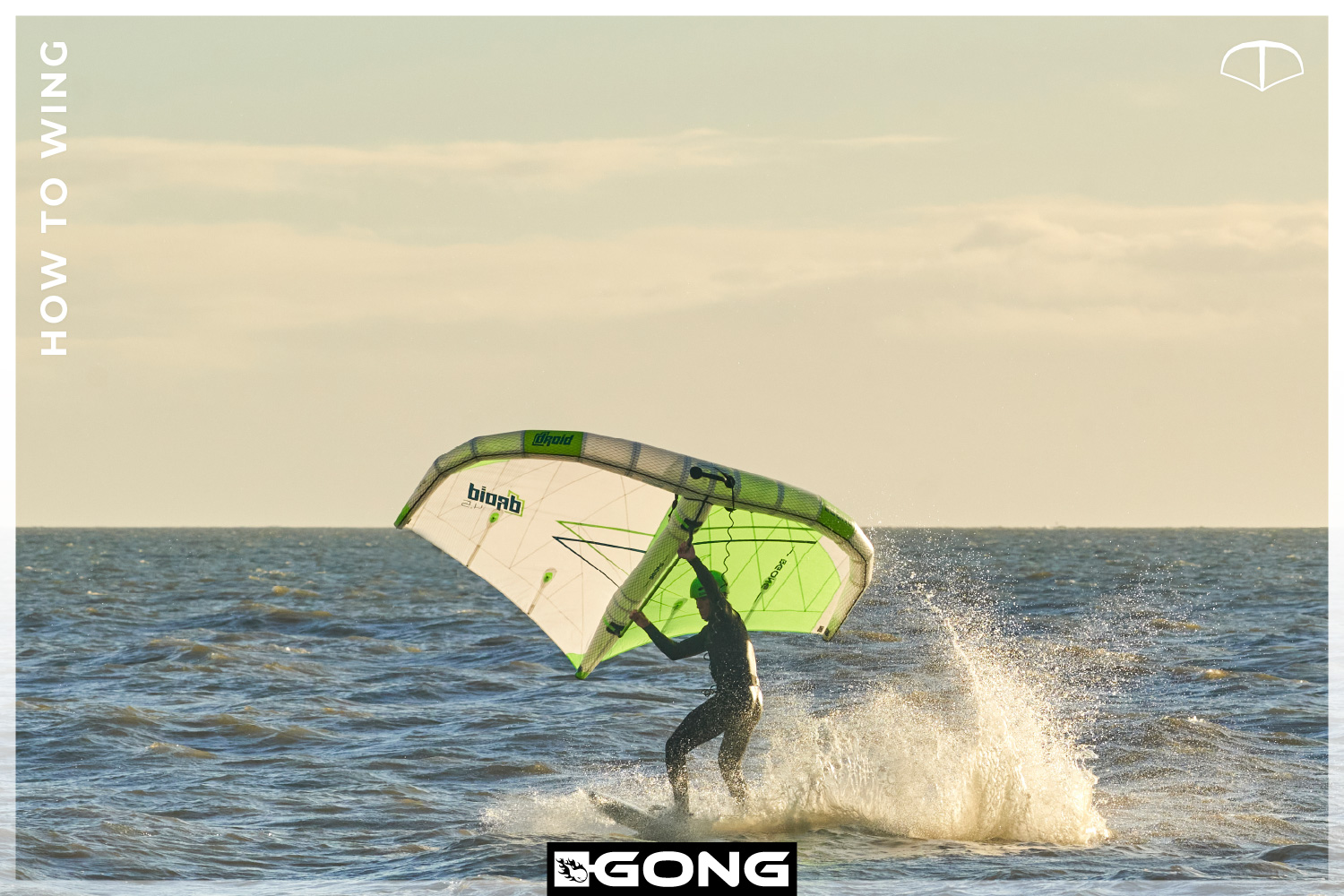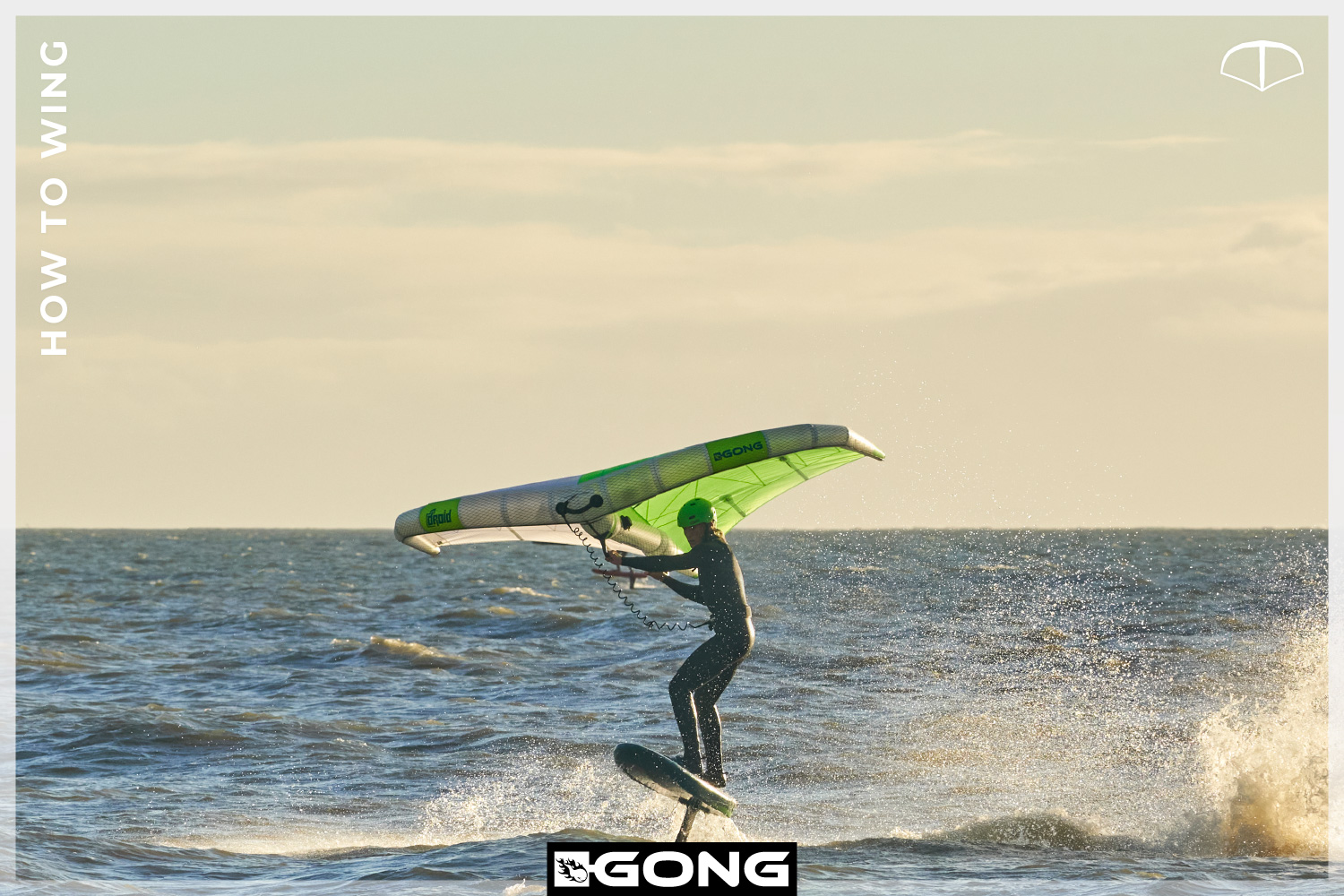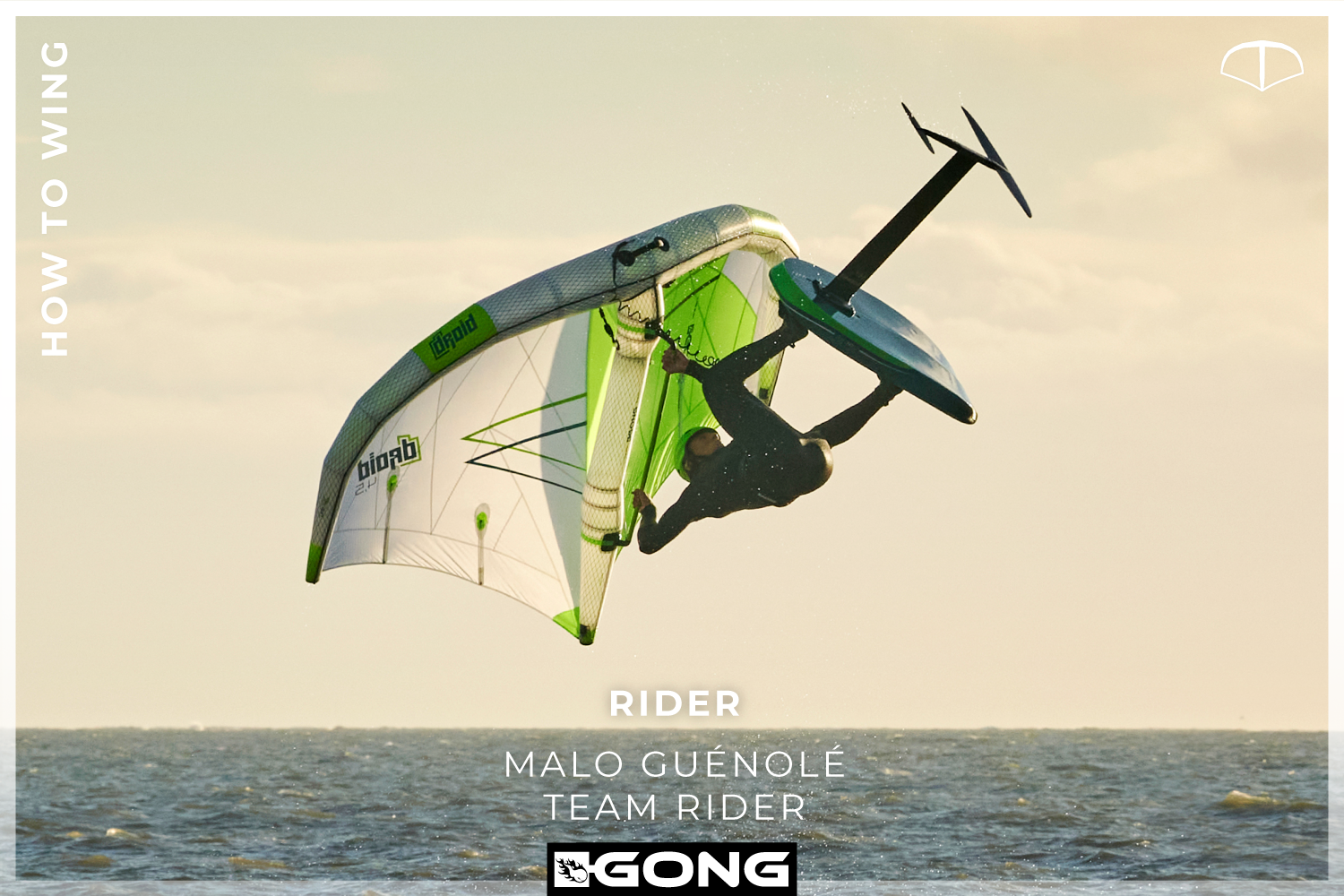Backloop
The backloop is an aerial maneuver which consists of jumping, directing the board into the wind in a fairly vertical manner and then rotating the wing back to its starting position at the top of the jump.










Wing foiler: Malo, team rider GONG, with a Stunt FSP Pro, Droid UPE Aramid, HM85 mast, front wing Ypra Surf-Freestyle and Freestyle stabilizer.
The impulse
To start with, the backloop is a jump, so you need to be riding at a fairly high speed and know how to master the impulse and take off of a simple jump (see How to JUMP). In contrast to the simple jump, the impulse happens upwind, pressing on your heels and with more weight on your back than for a simple jump.
Once you’ve picked your section to launch your jump and fly into the air, the going gets tough …
Since, when launching the jump, you put your weight slightly further back, the board will almost automatically rise to your pelvis level, if not more, depending on how radical your intentions are.
As you go up, you will have to pretend to give a big karate back kick to spin the board as much as possible, almost to the landing position (a tweaked position at this point). But be careful, in a tweaked position you have to twist as much as possible and therefore keep your upper body, and especially your head, in the starting position, otherwise it may throw you off balance for the rest of the maneuver. Usually, you reach this tweaked position at the top of your jump and there arises a new question, what to do with the wing?
The rotation of the wing
The rotation of the wing is without a doubt the hardest part of this maneuver. That’s when it all plays out: either a catastrophic landing that you are likely to remember for quite a while, or a super smooth wing shift that insures you to have a smooth landing and a great sense of satisfaction.
First of all, the timing of the rotation of the wing must be very precise. If you rotate it too early your board will not have had time to turn and will be late for the landing: you will fall like a stone in the water because your wing will be out of wind. On the other hand, if you turn it too late your board will gradually go back in the wrong direction, and the landing will fail; but your wing will be very hard to turn and you risk having it torn from your arms or not having time to turn it and to hit it violently against the water (immediately release the wing).
This is why the rotation of the wing must be done at the top of your jump; at the same time as you finish rotating your board. By rotating it at this time, you will also benefit from a parachute effect which will soften the reception. Now it remains to know how to rotate the wing…
In fact, once you get to the top of your jump, it will be a matter of spinning the wing as fast and efficiently as possible to have time for landing. So you have to make it turn on a certain axis which is the happy medium between pulling out arms and ending up backwinded. To do this, you will first have to look at your landing point, which will automatically help you getting back in line with your board (un-tweaked). At the same time that you turn your head, you will bring your front arm towards you while lowering it to your shoulder level. As you pull down your front arm, you are going to have to push with your back hand very hard as if you wanted to give a big boxing hook. At this point, you have the wing almost in front of you and you start to descend. You will have to bring the wing in front of you if you don’t want to land in it and risk breaking it because the shock can be VERY violent. For that you just have to lower your back hand and raise your front hand, which will bring the wing back into parachute position. If you have trouble getting the wing through, you may want to try giving a slight shake in the opposite direction of the rotation with the shoulders which might allow you to free yourself and be able to make the movement.
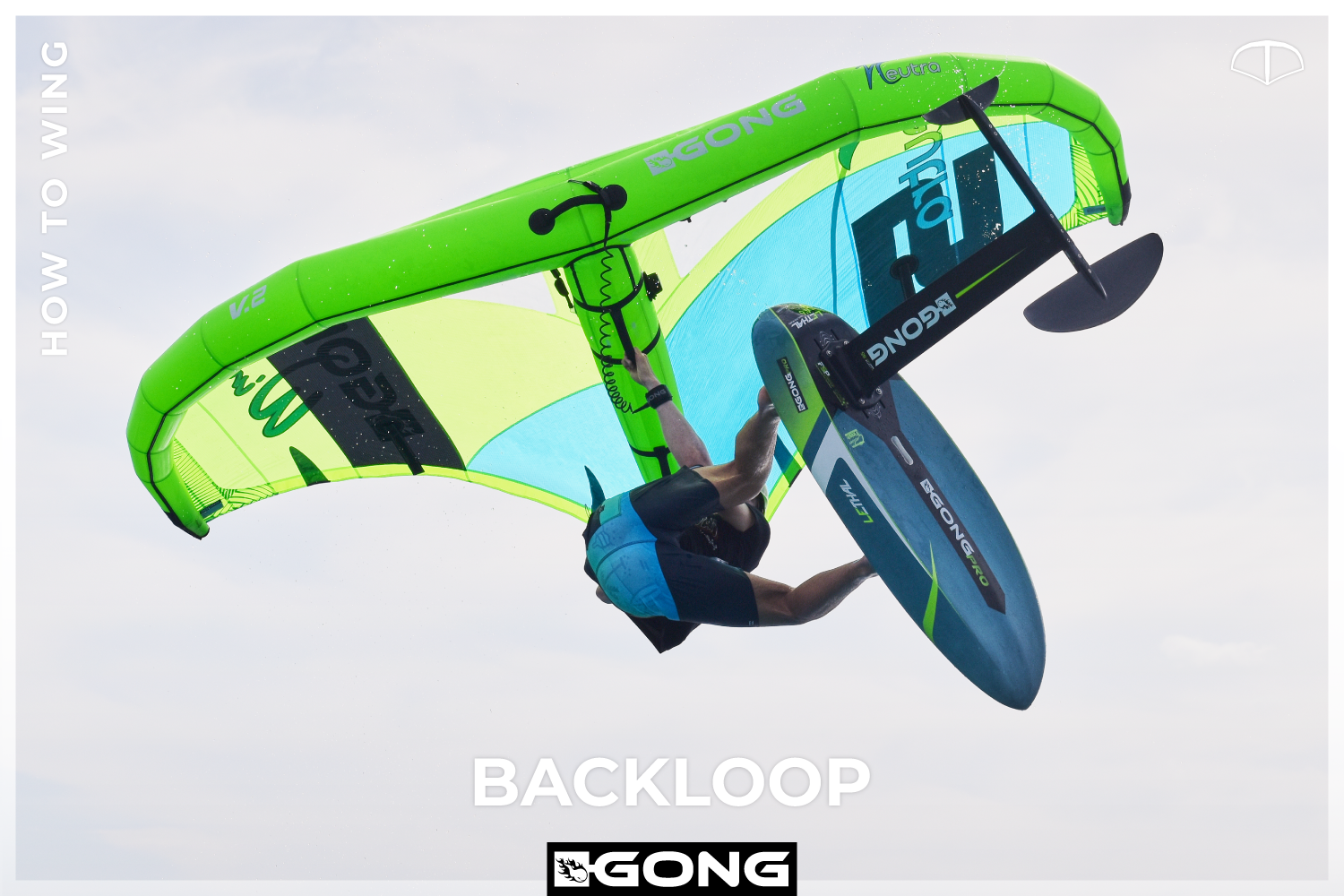
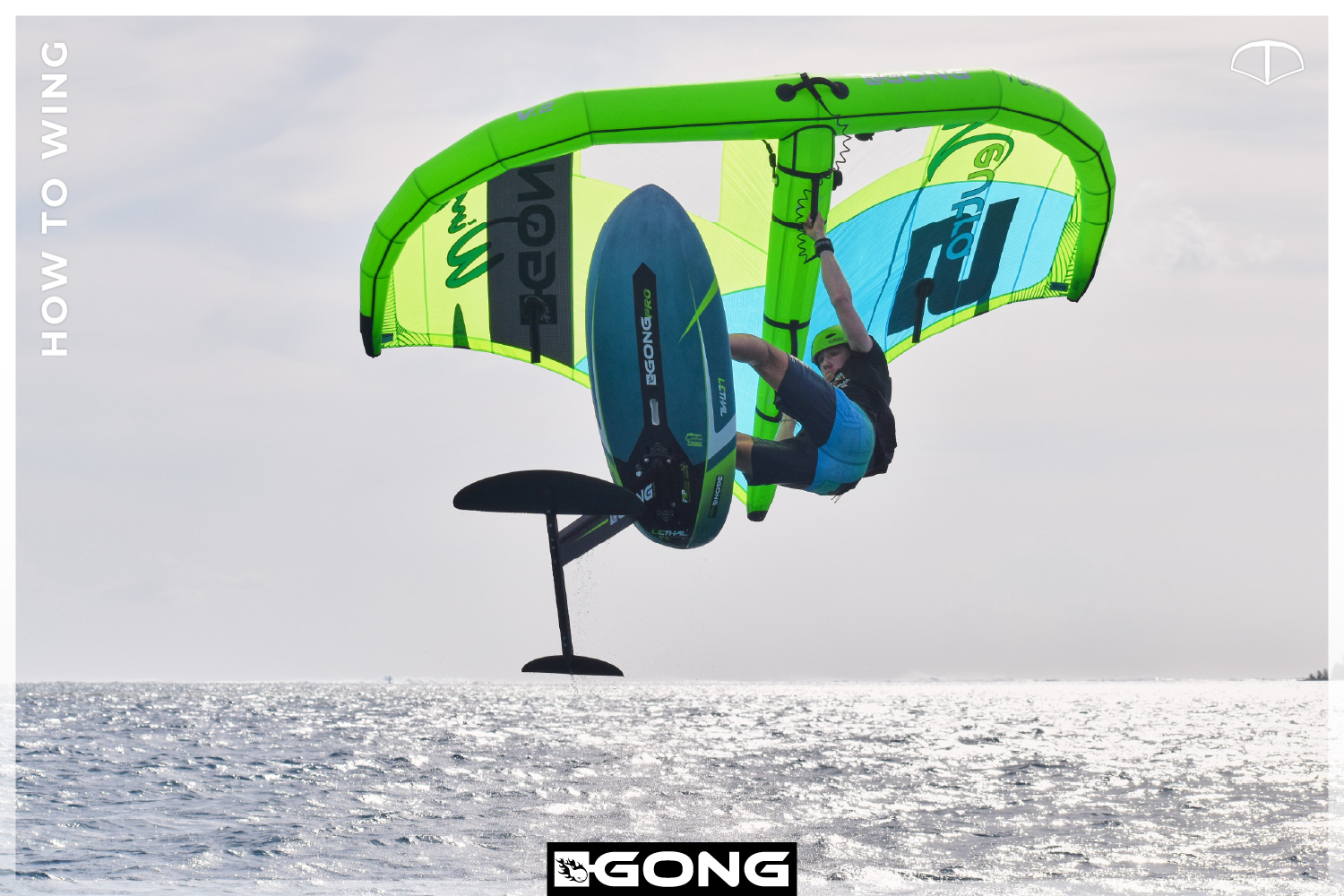
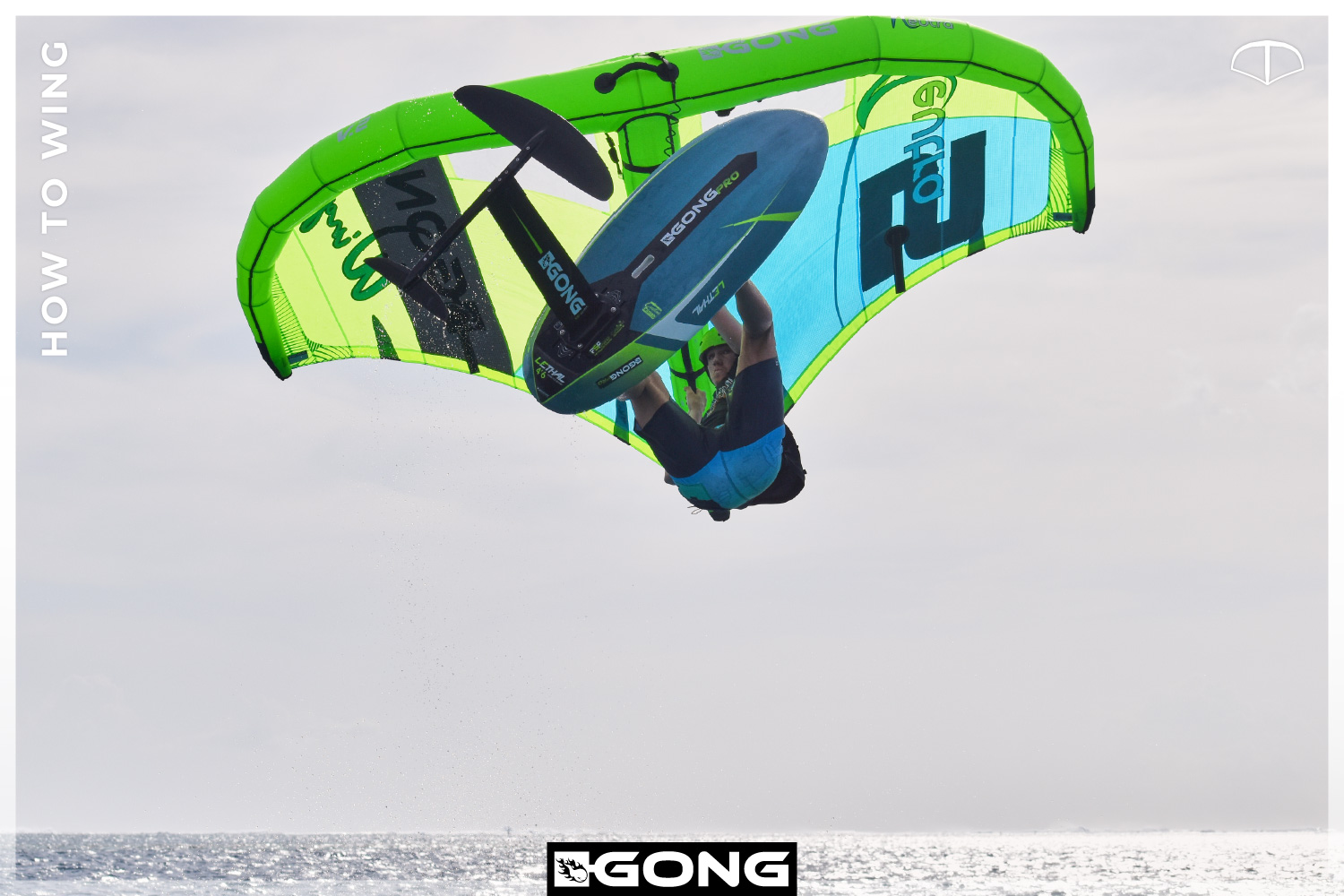
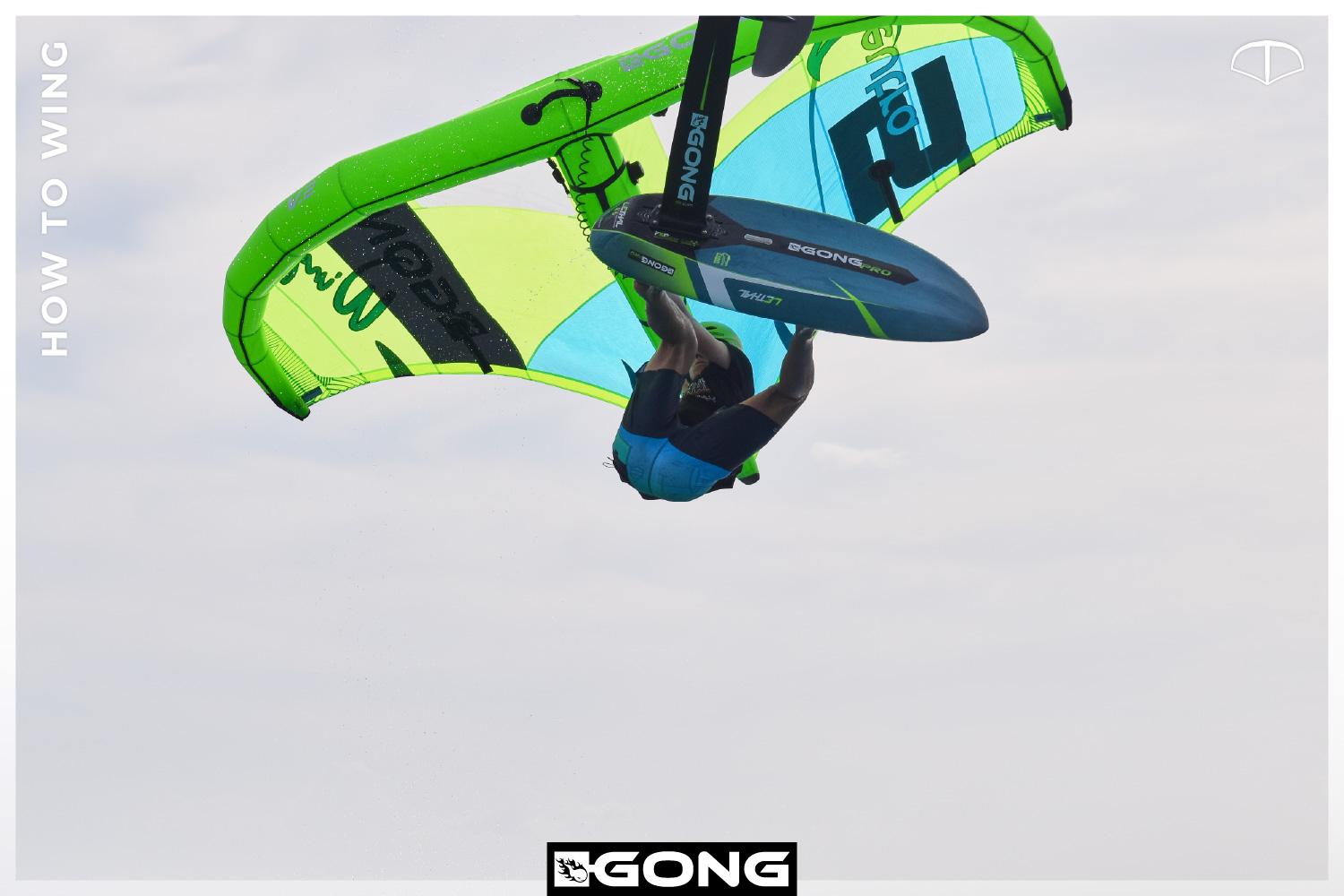
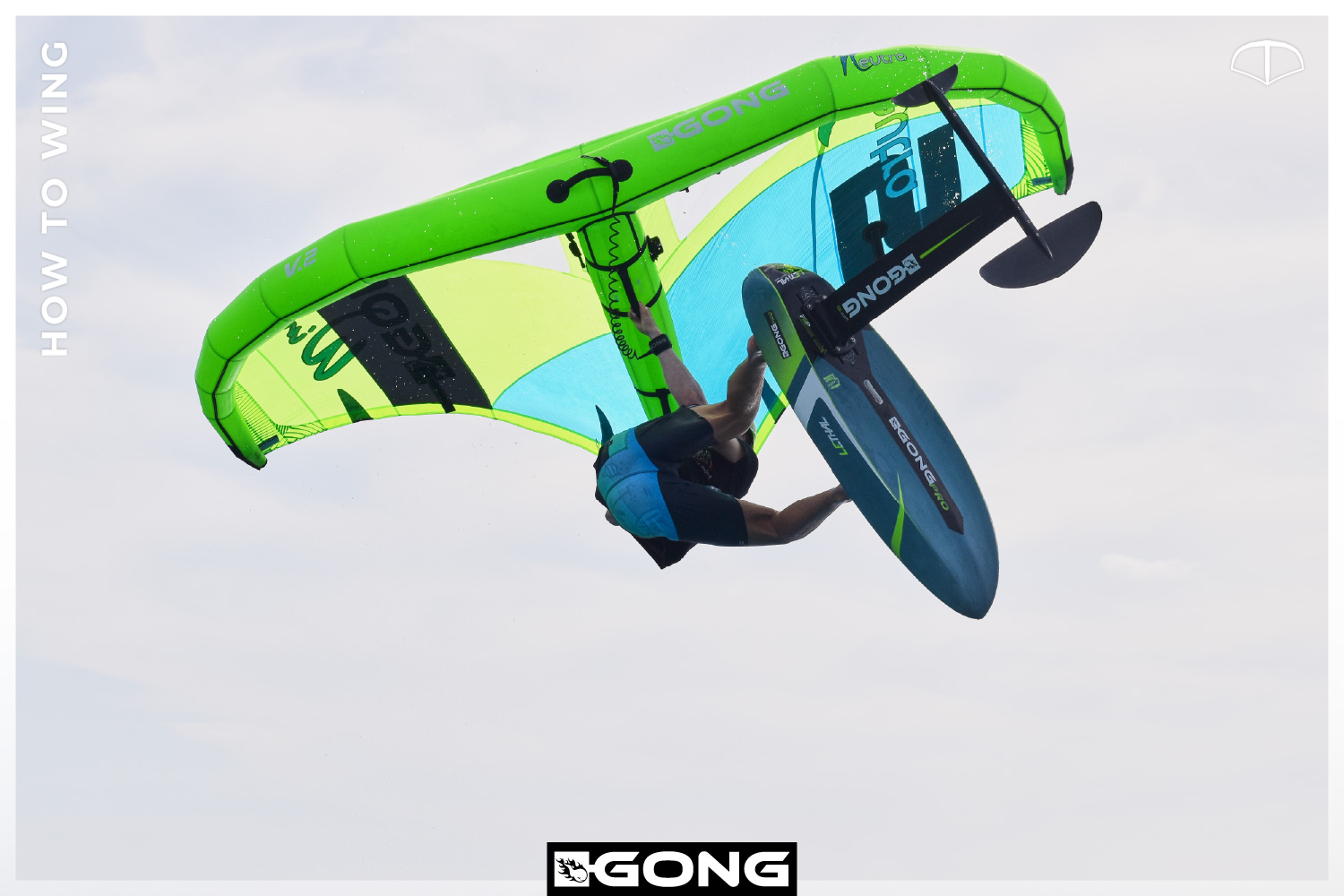
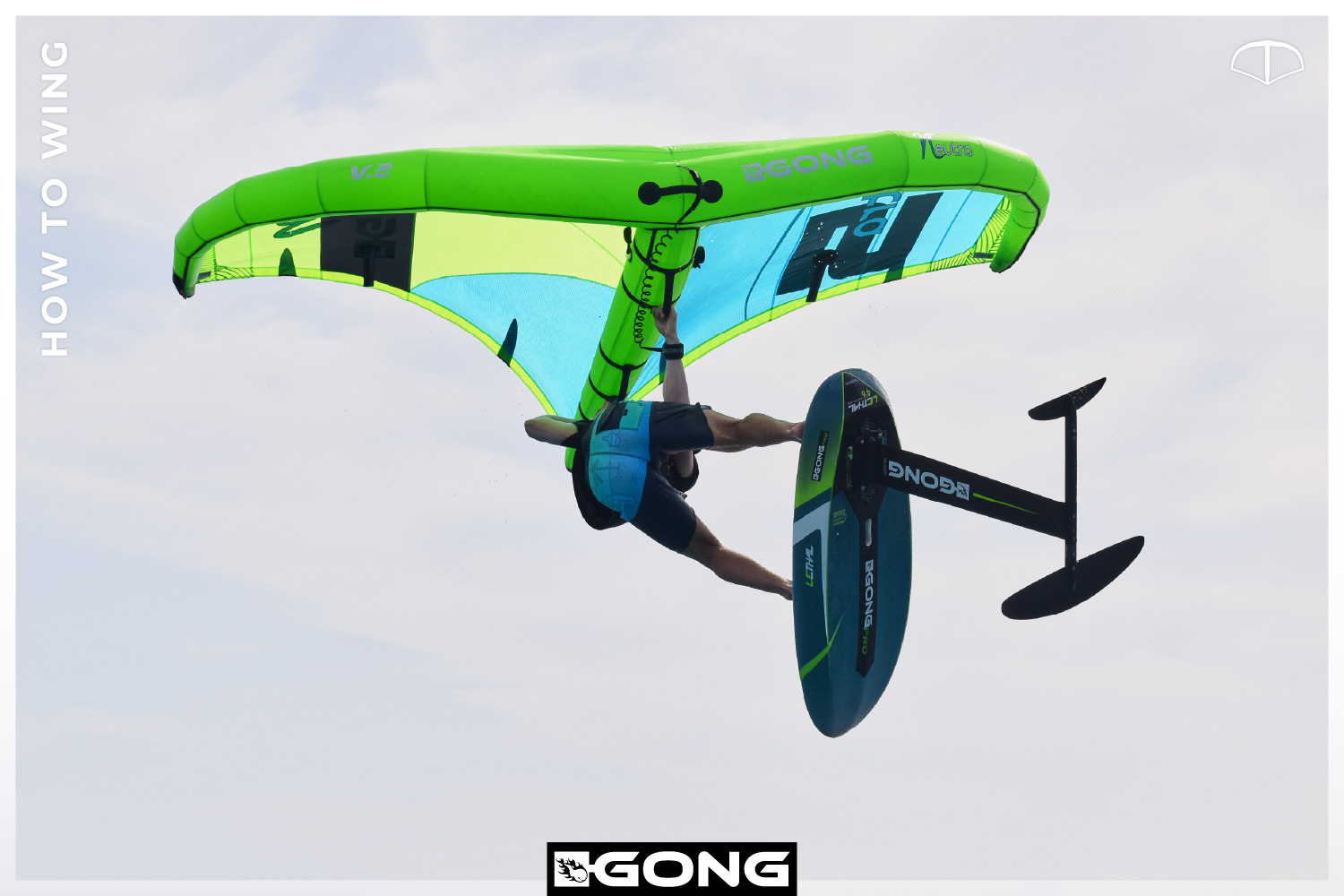
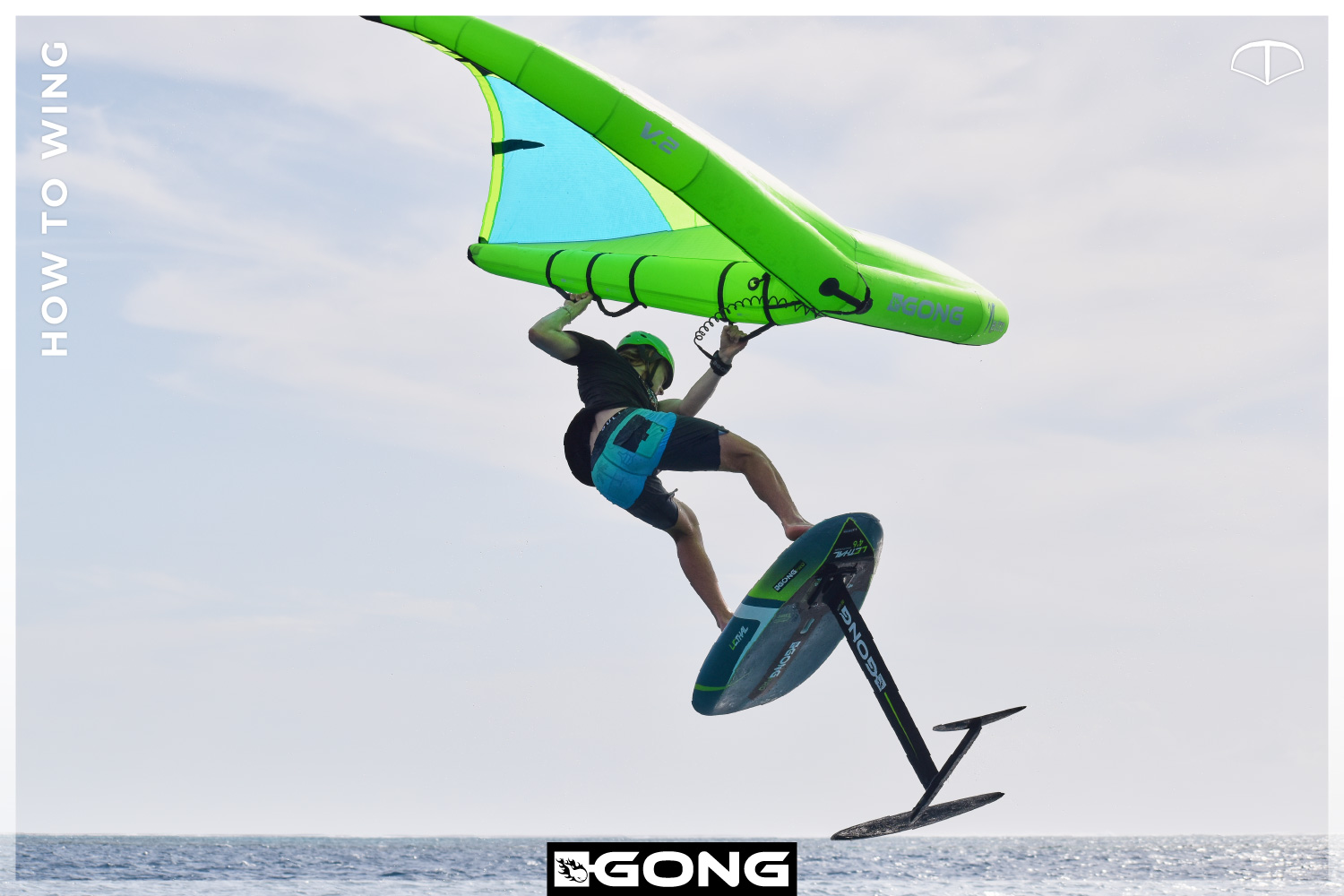
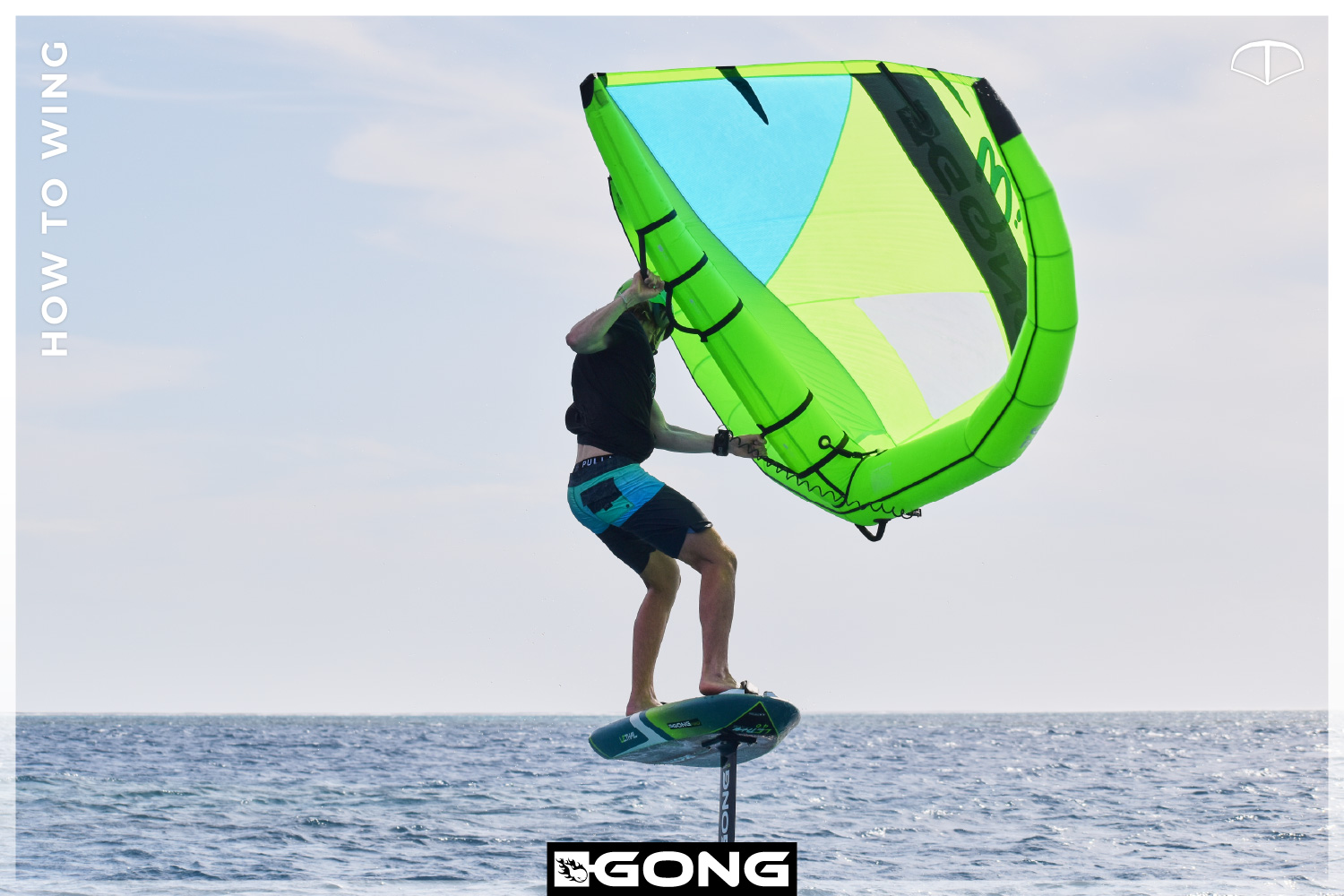
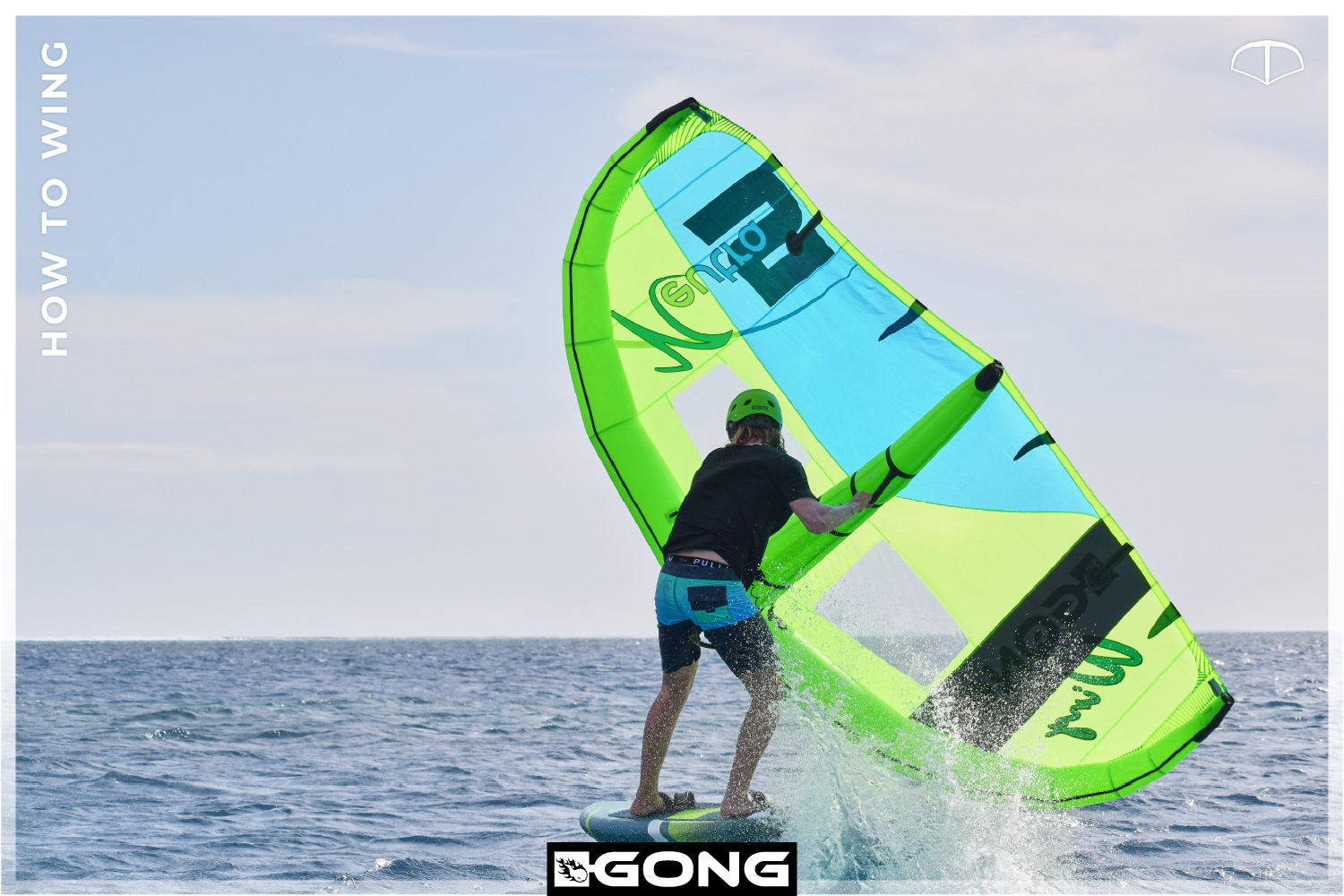
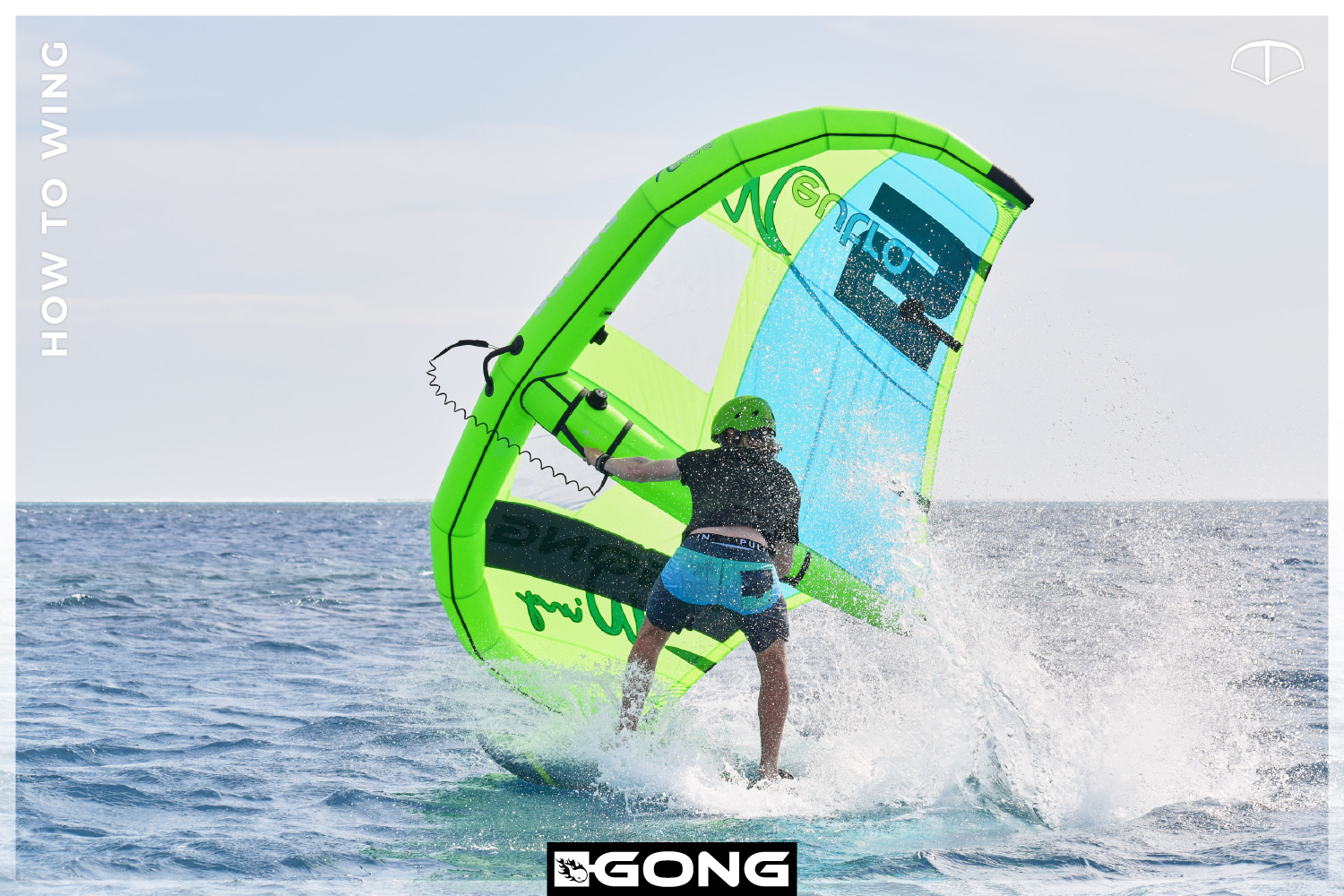
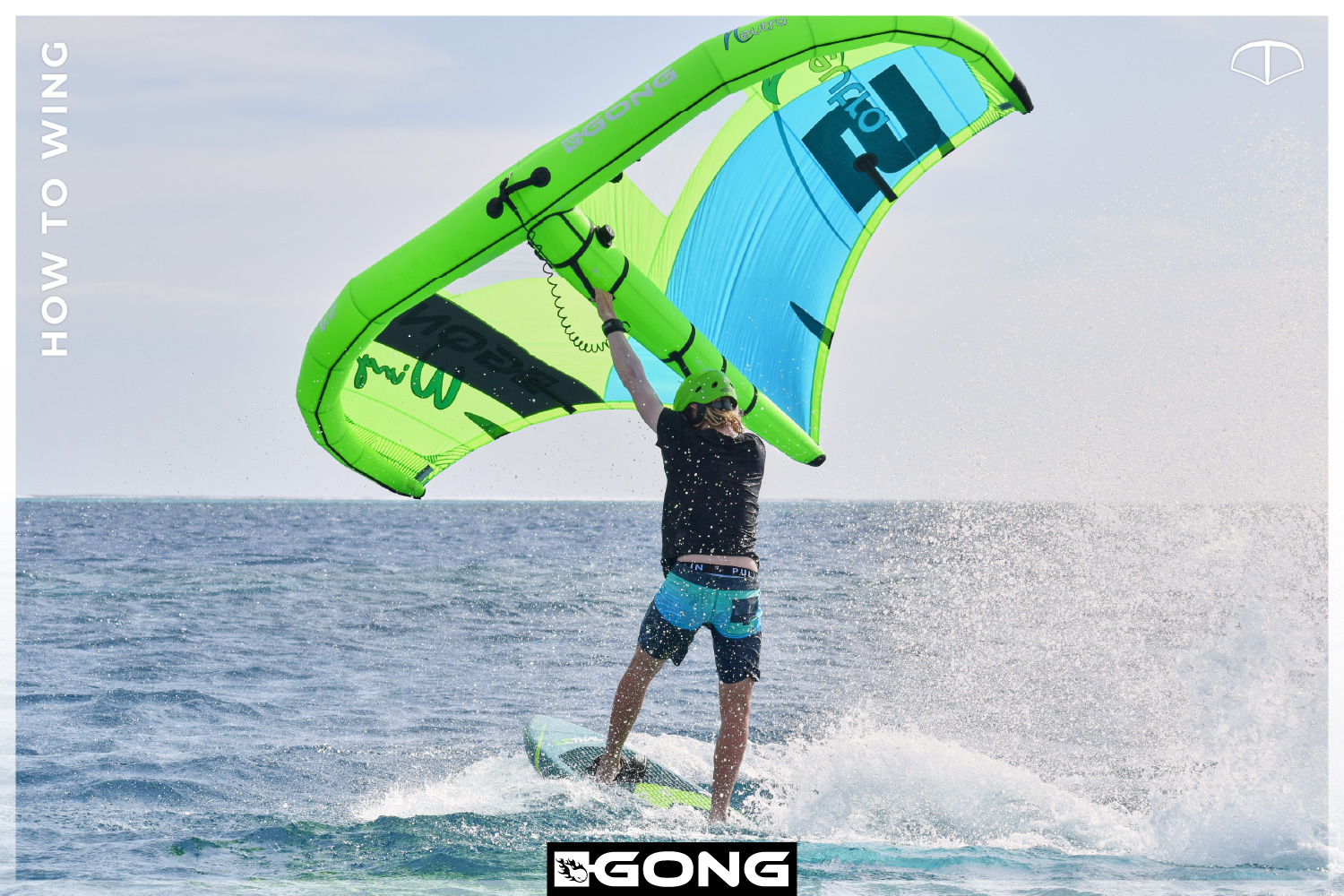
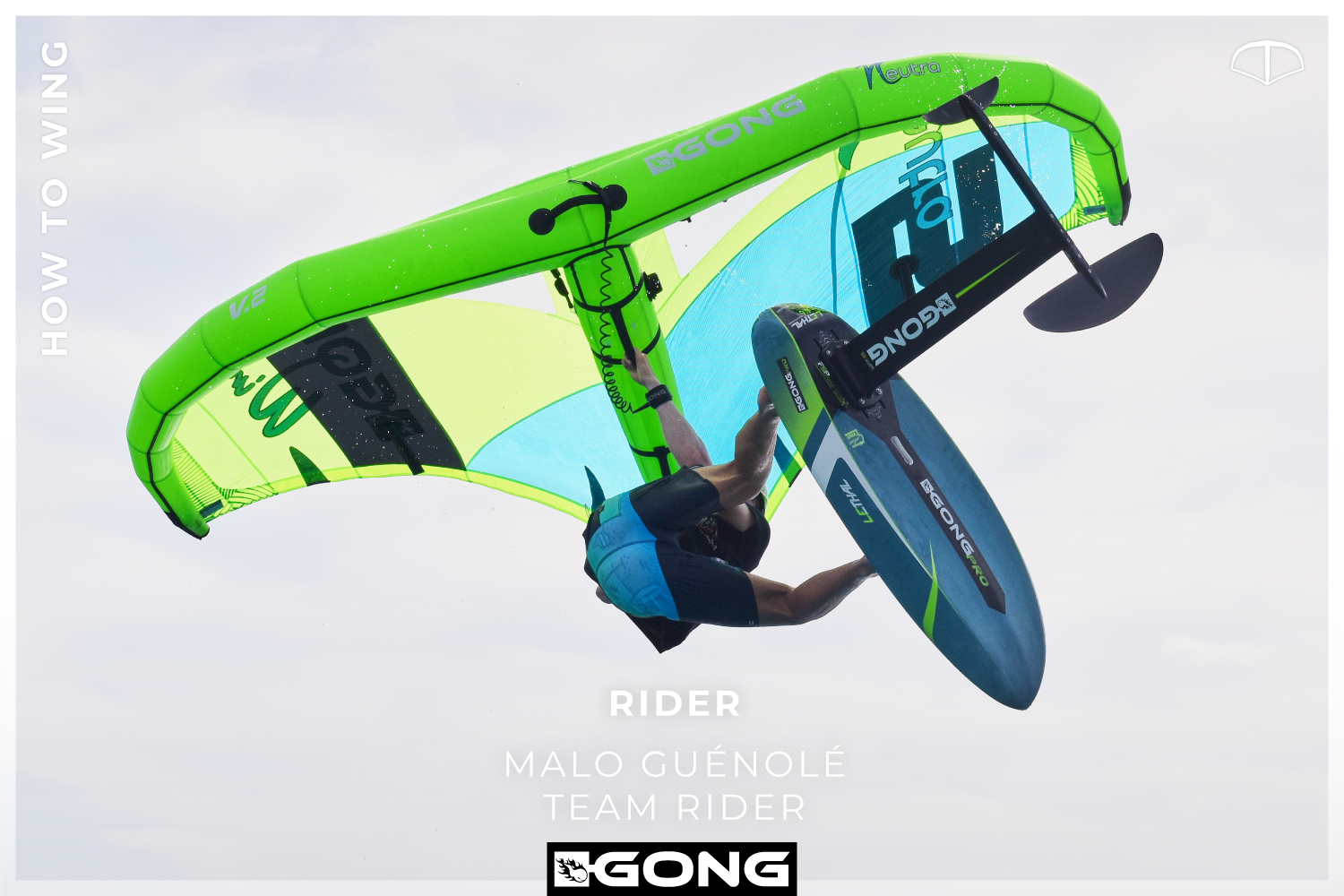
The size of the wing
It is clear that between doing a backloop in 3m and doing a backloop in 7m there is a HUGE difference. So for backloops it is better to use a wing size up to 5m max. I also recommend that you try your backloops slightly underpowered and in a fairly rough sea which ensures an easier rotation of the wing. It’s also possible on flat days but the impulse is much harder to get and you will have less height so less time.
Finally: the landing. Well, it’s kind of how you feel. Everyone has their own technique, but it is still preferable to land in a “nosedive” way, that is to say by nosediving very slightly, it will be less violent for the gear and for you. Once landed, you just have to regain your balance, pump a few strokes and go for another 😉
There you go, you now have all the technical details of the backloop in mind. All you have to do is grab a wing, a foil and a helmet and repeat the movement until it passes: have fun !!
Key points :
- Good speed
- A big impulse
- To tweak the body as much as possible
- Perfect timing and axis of rotation of the wing
